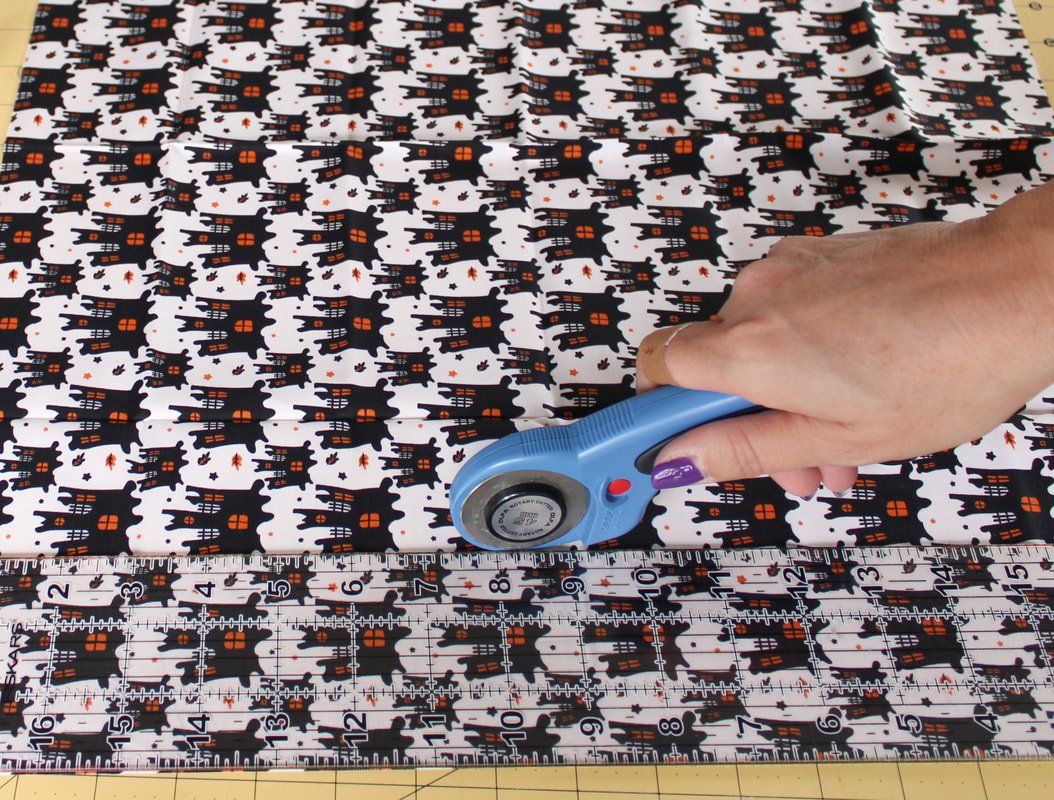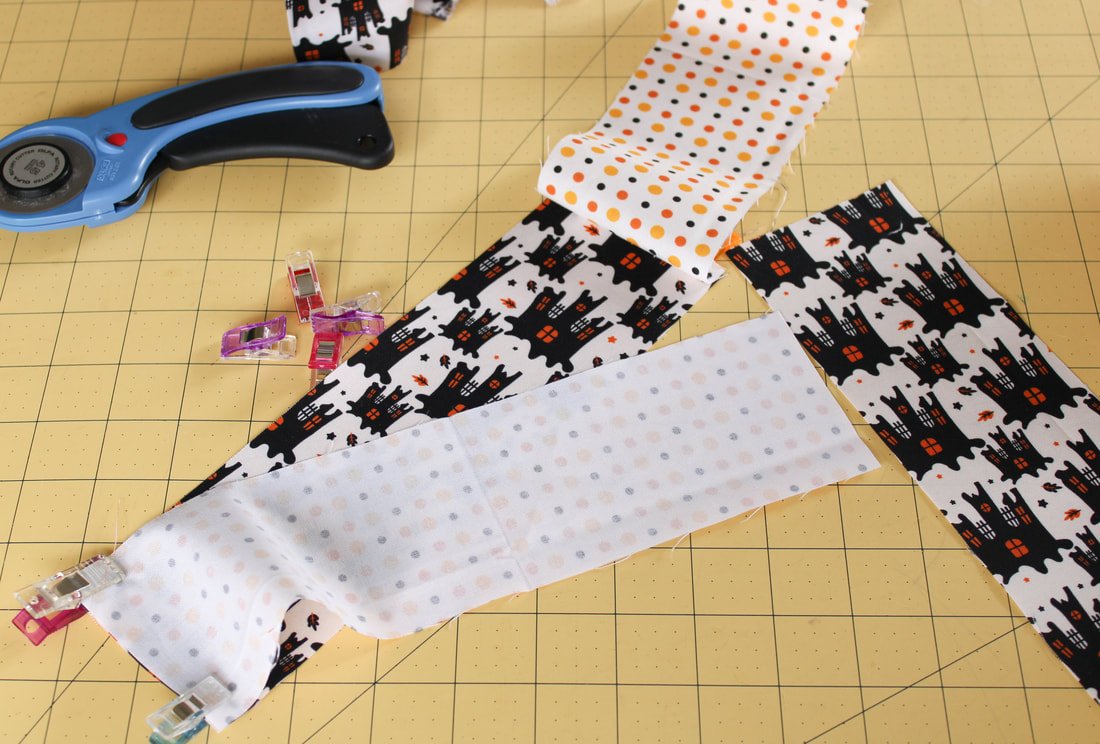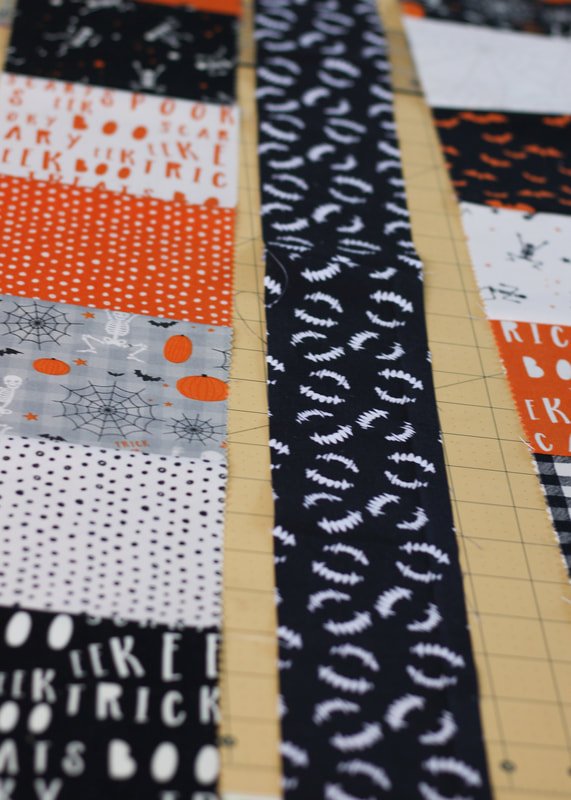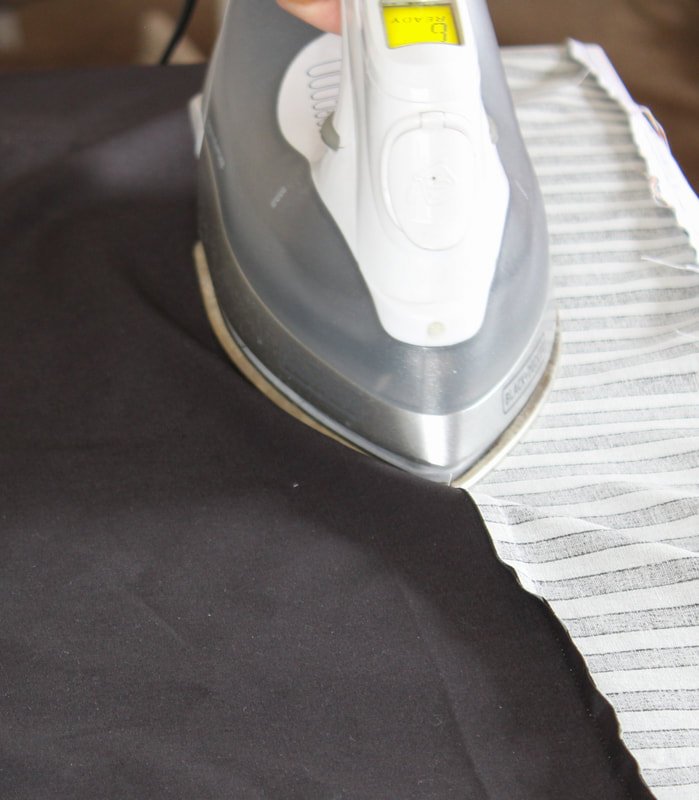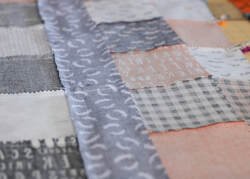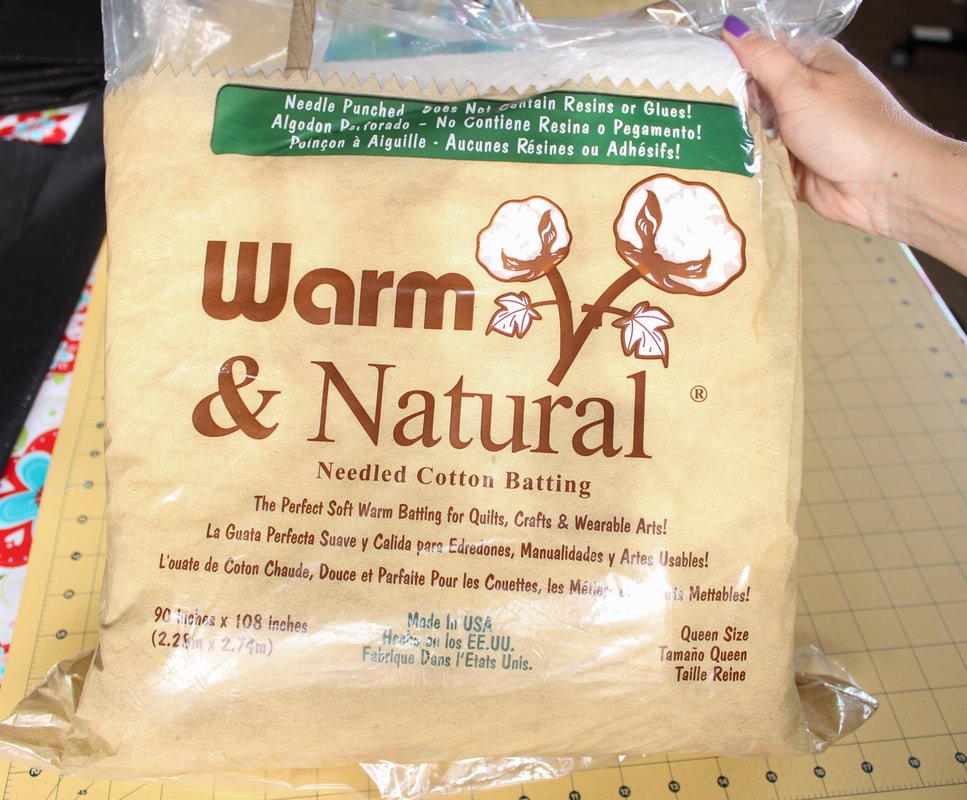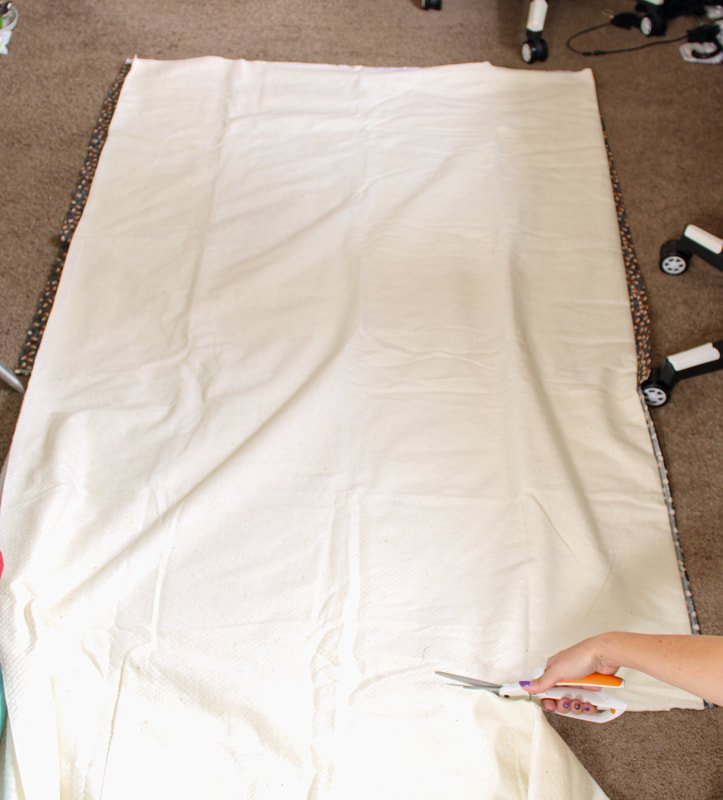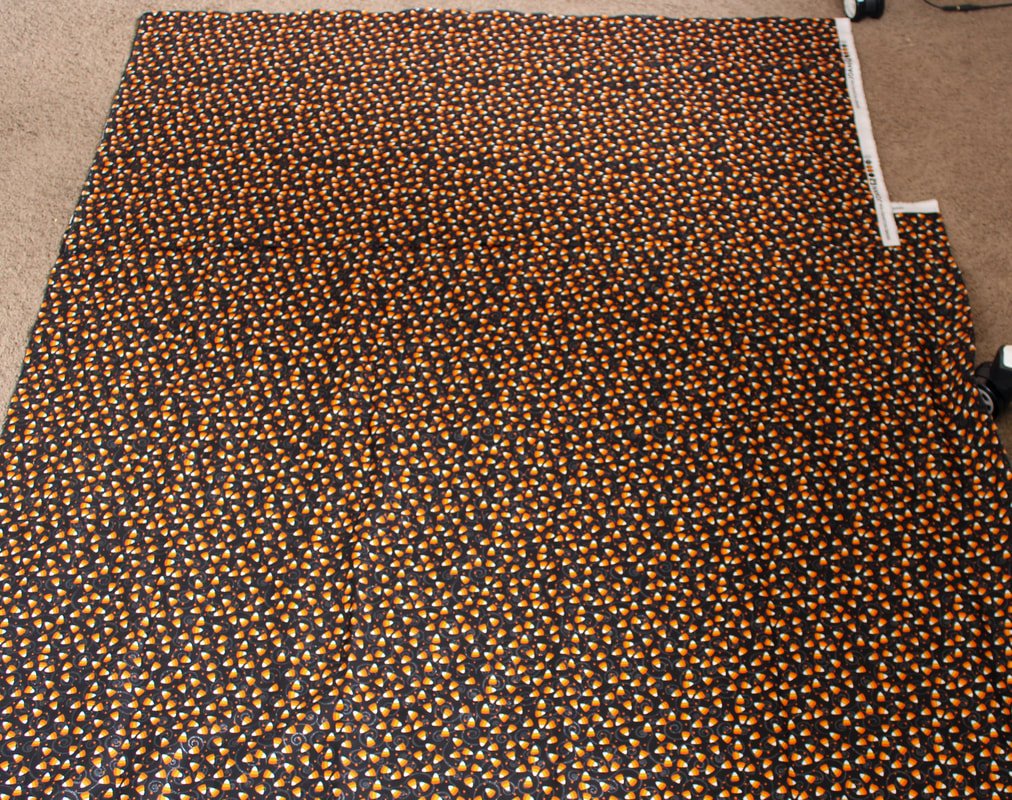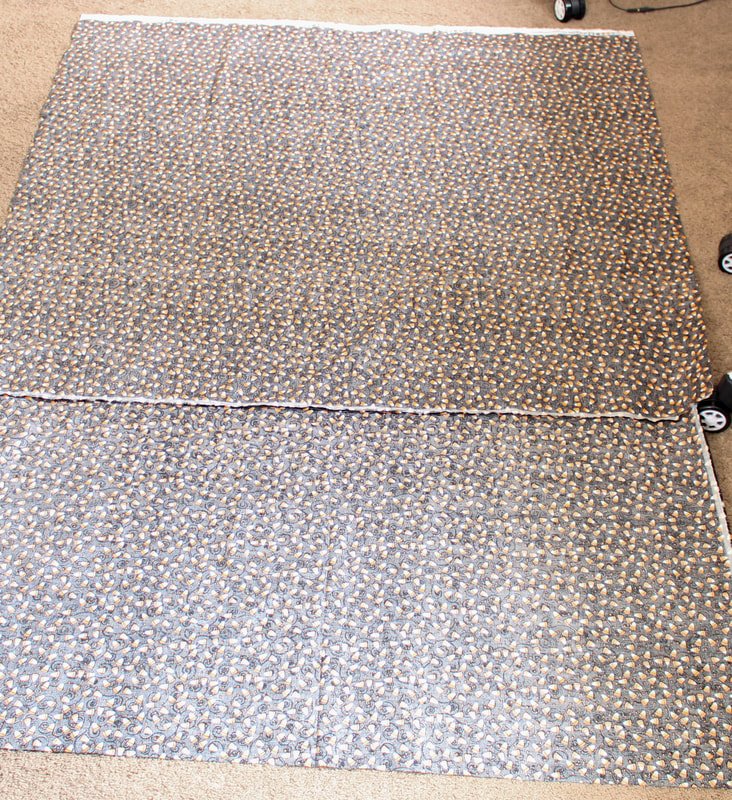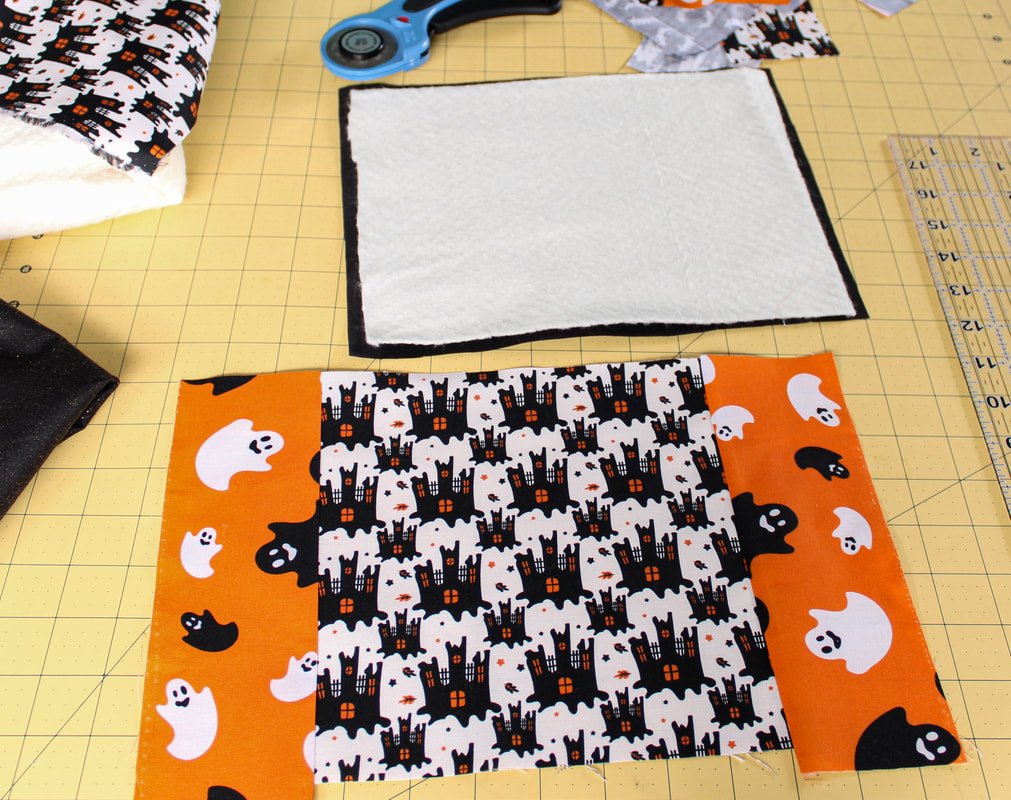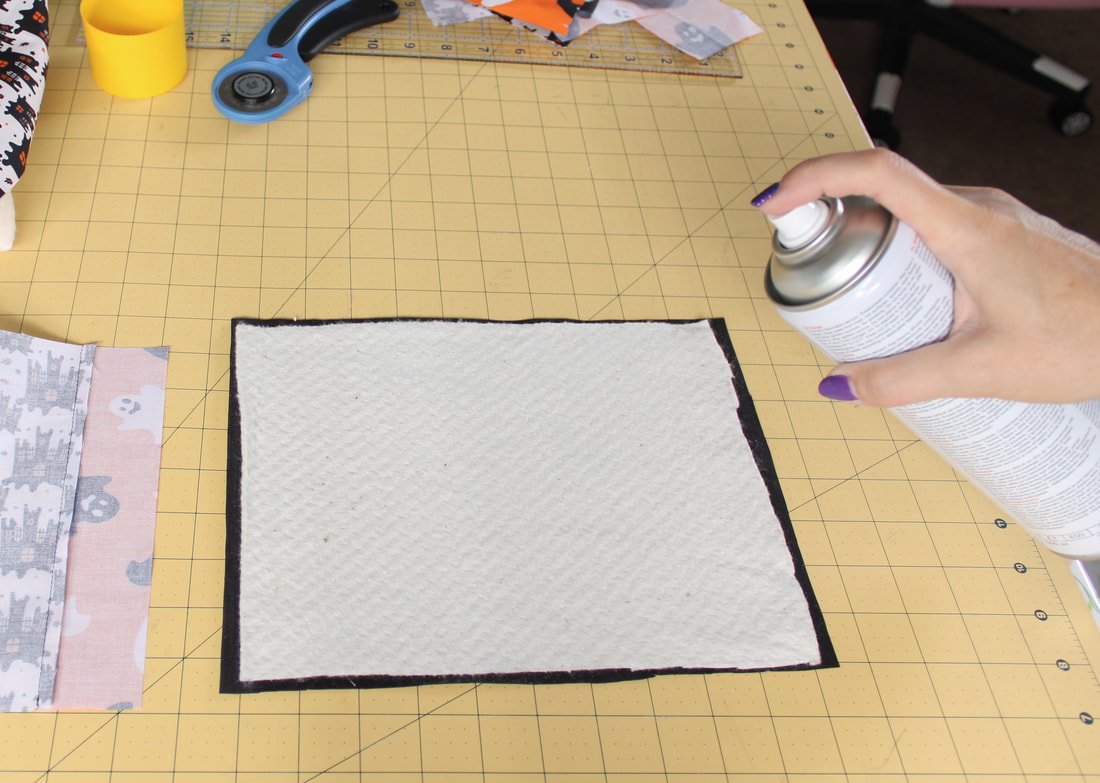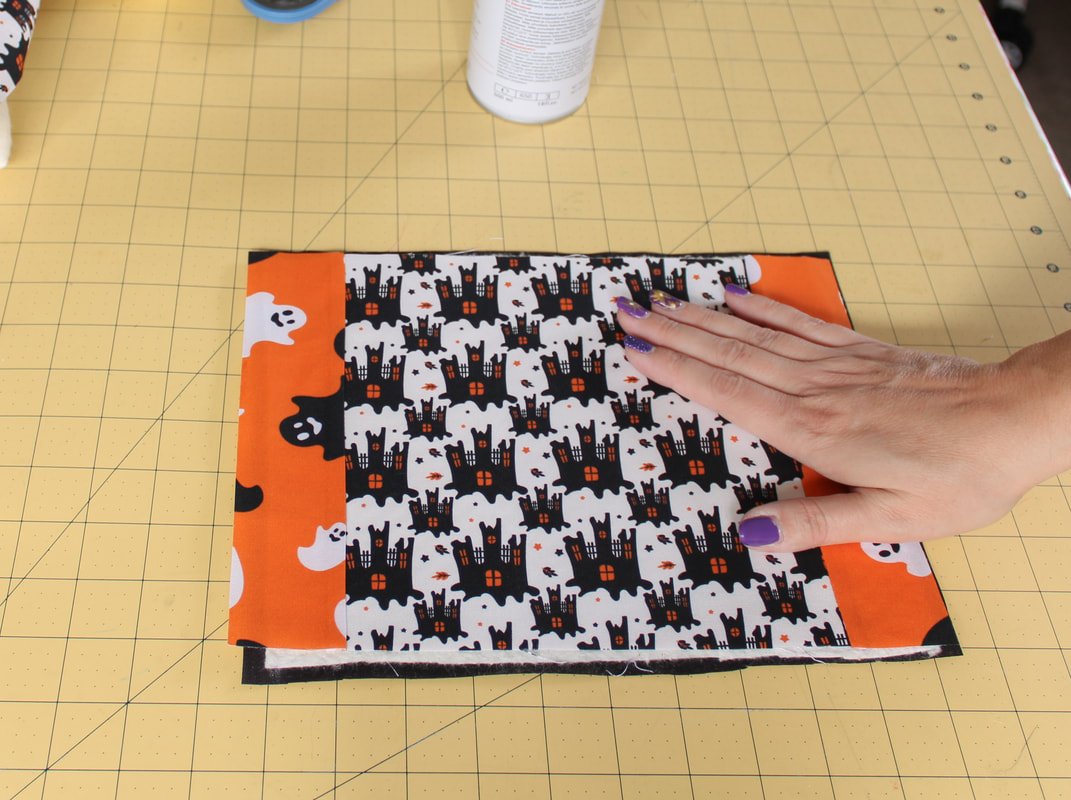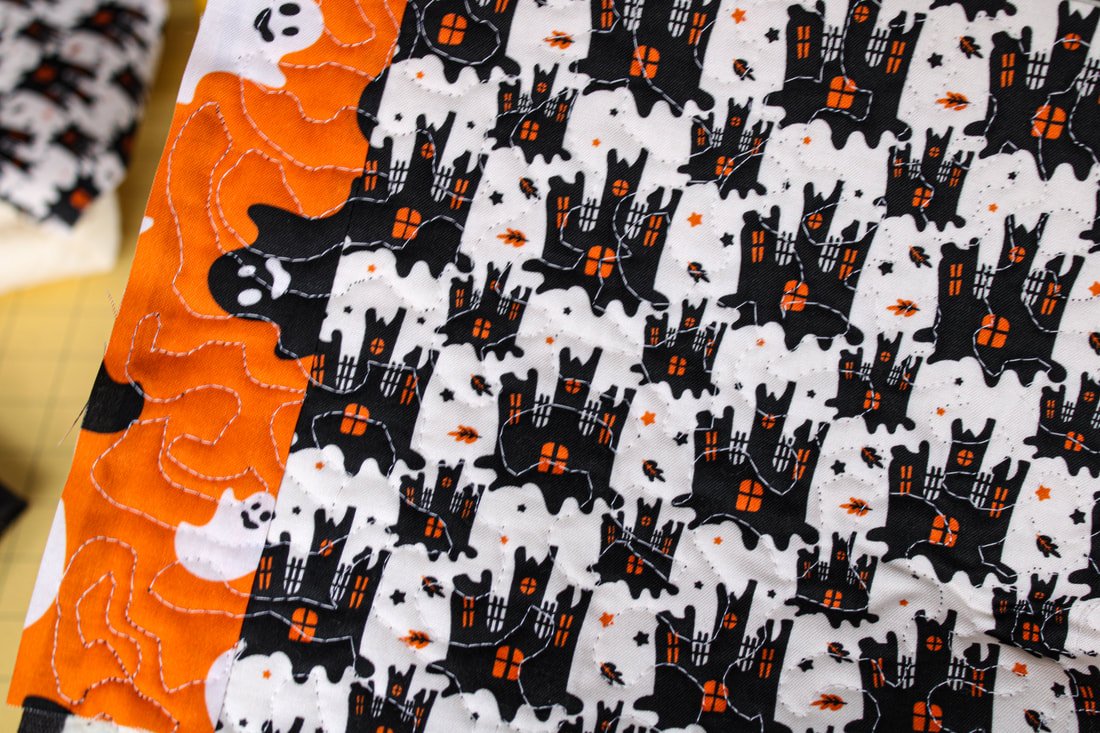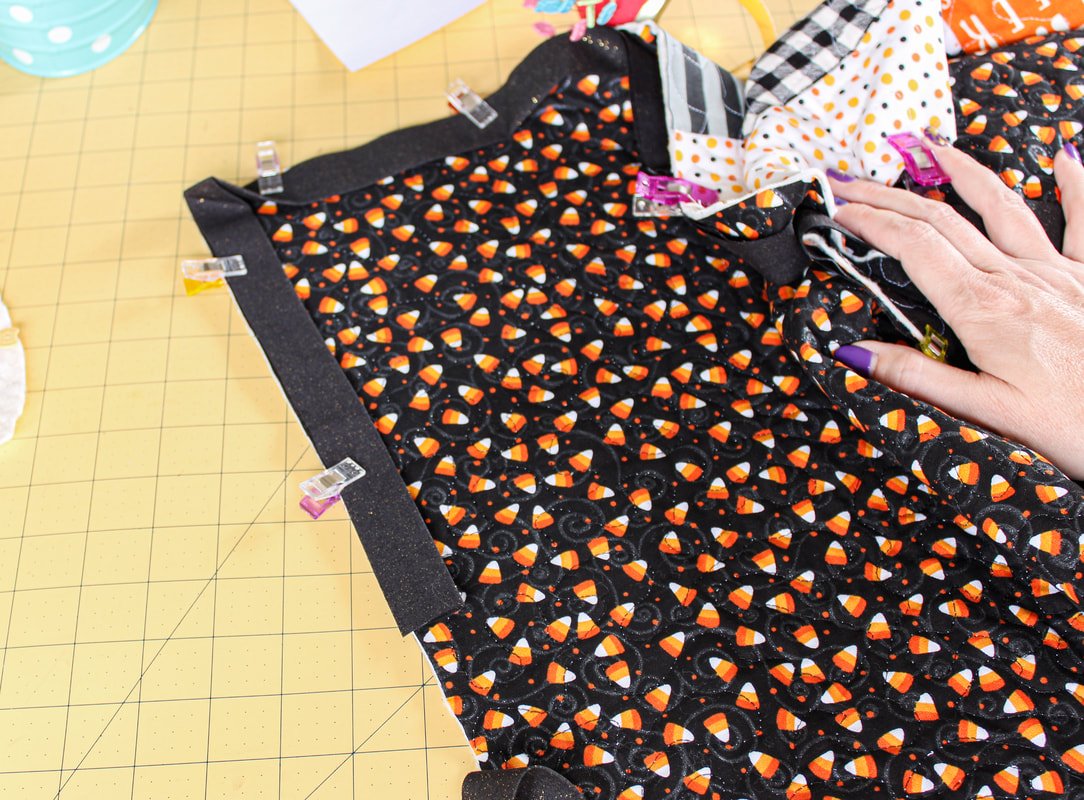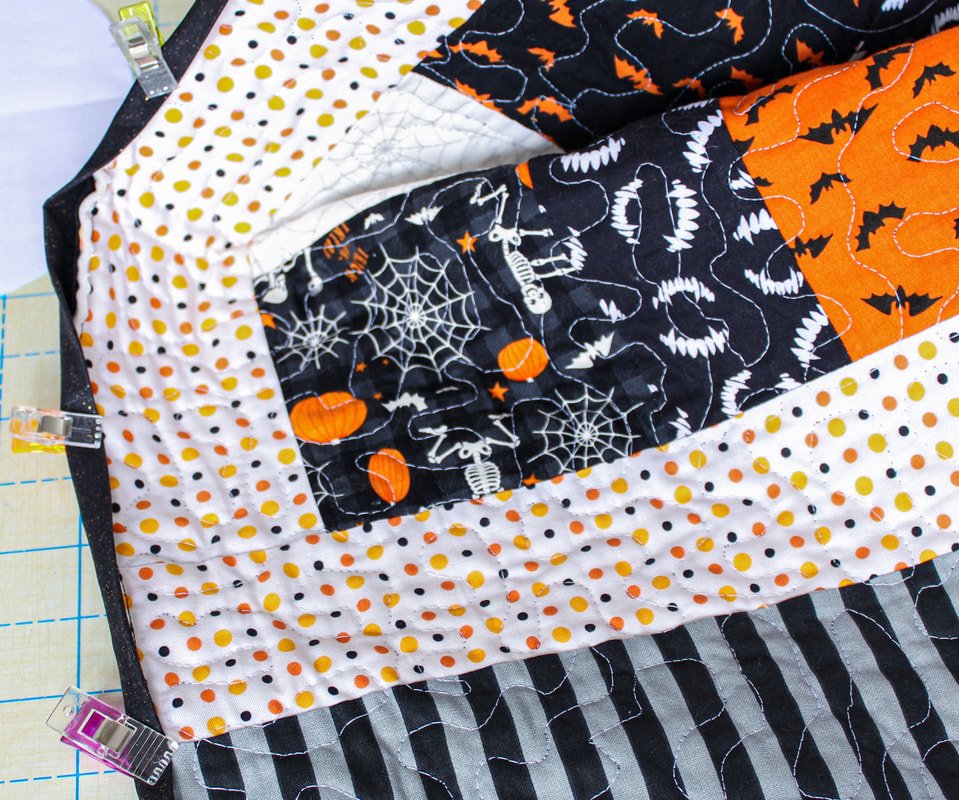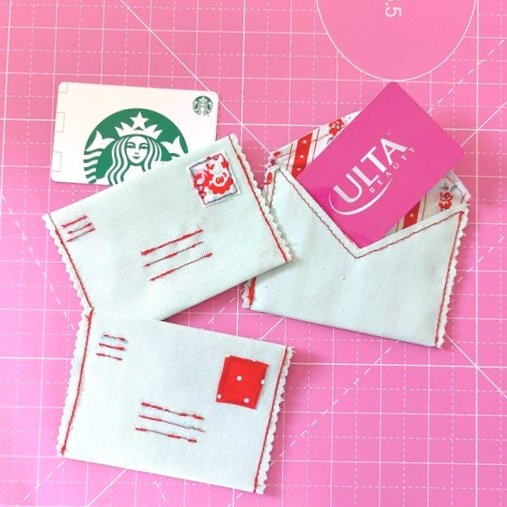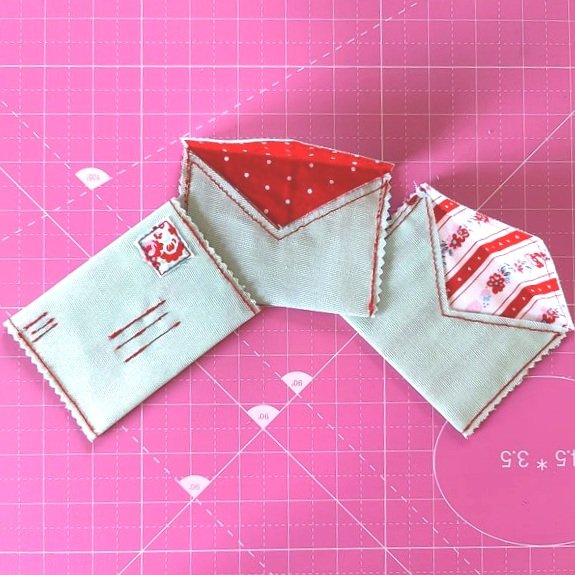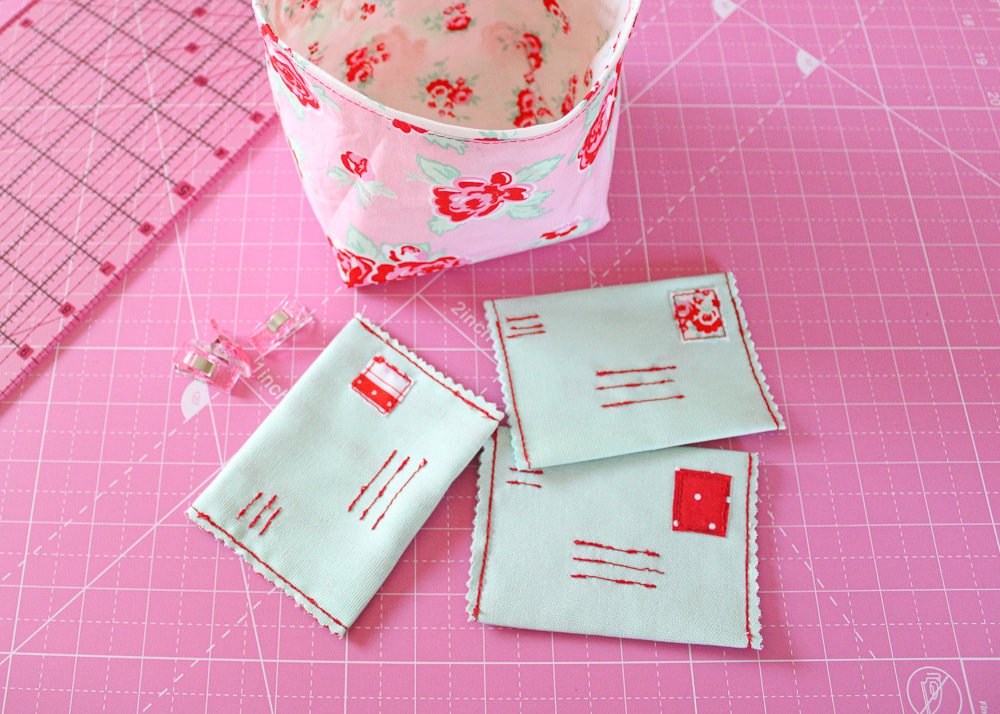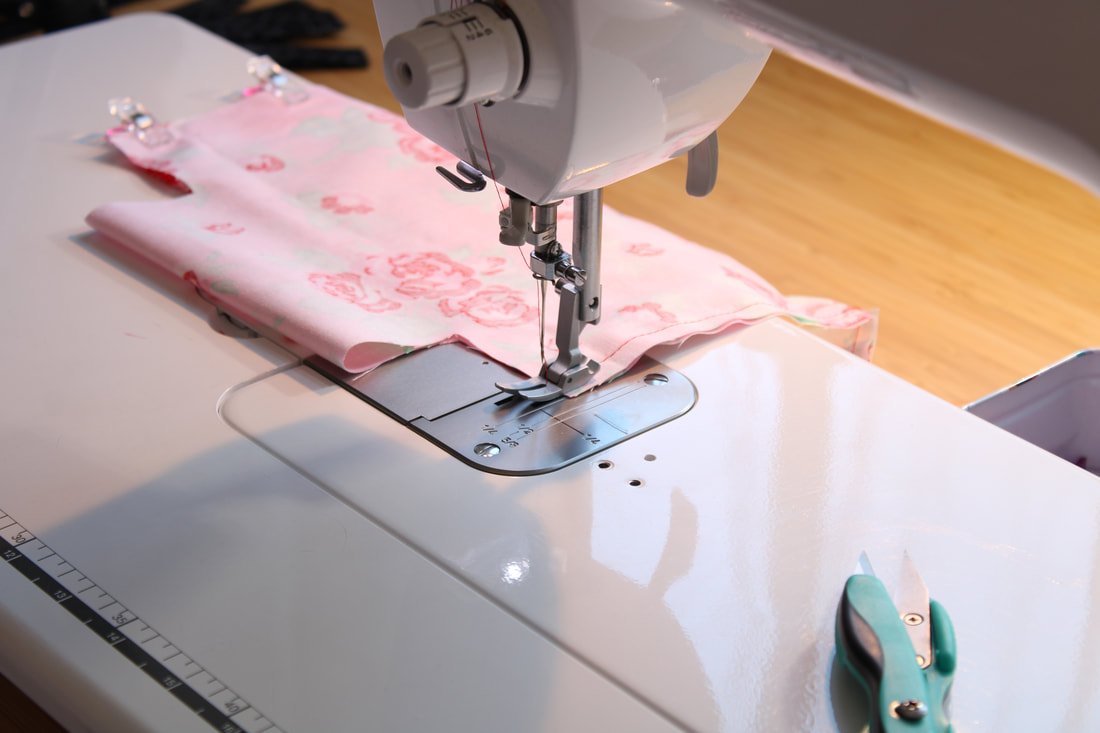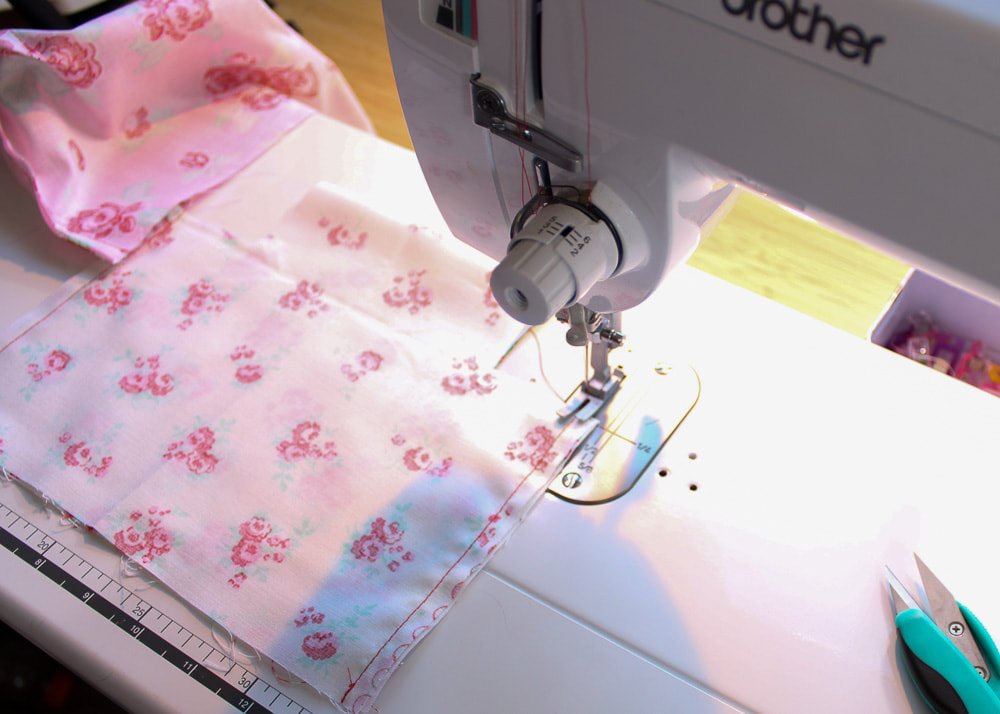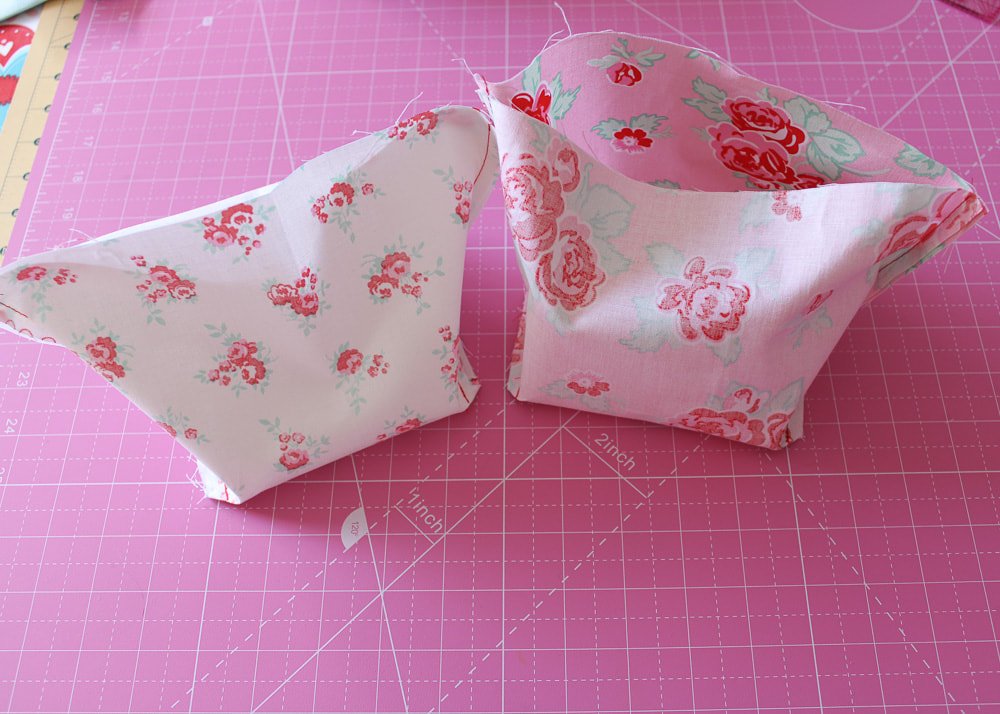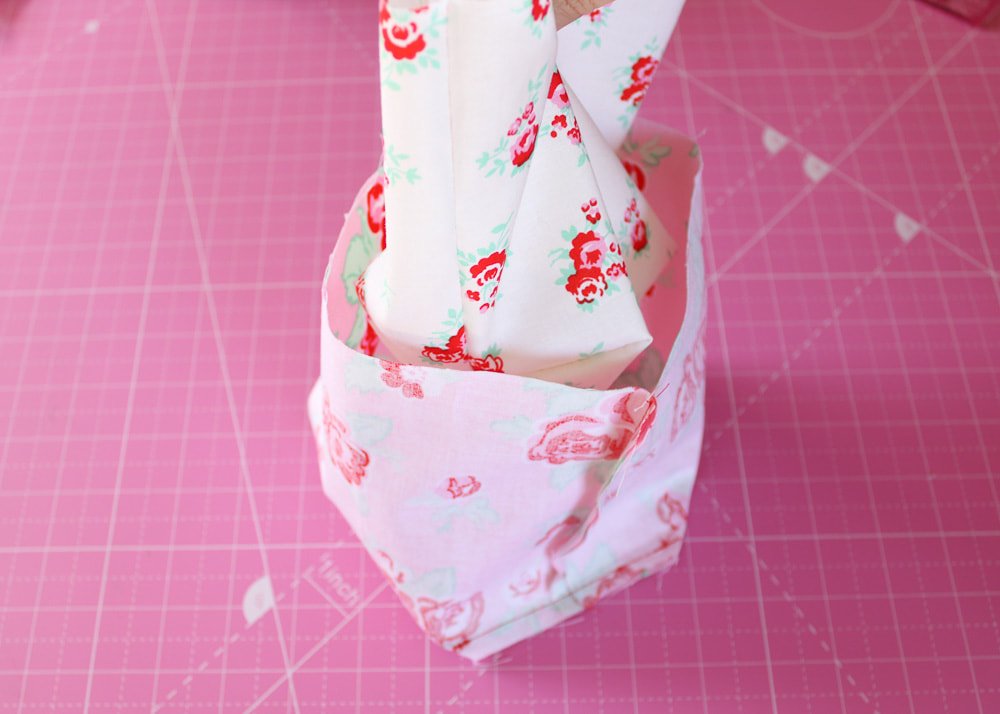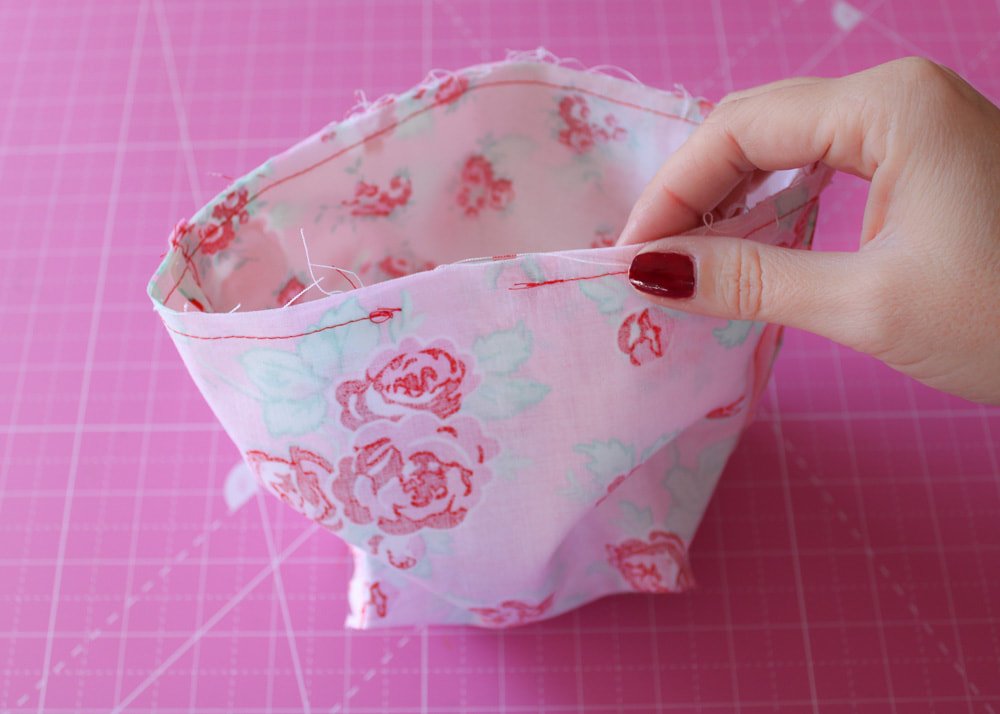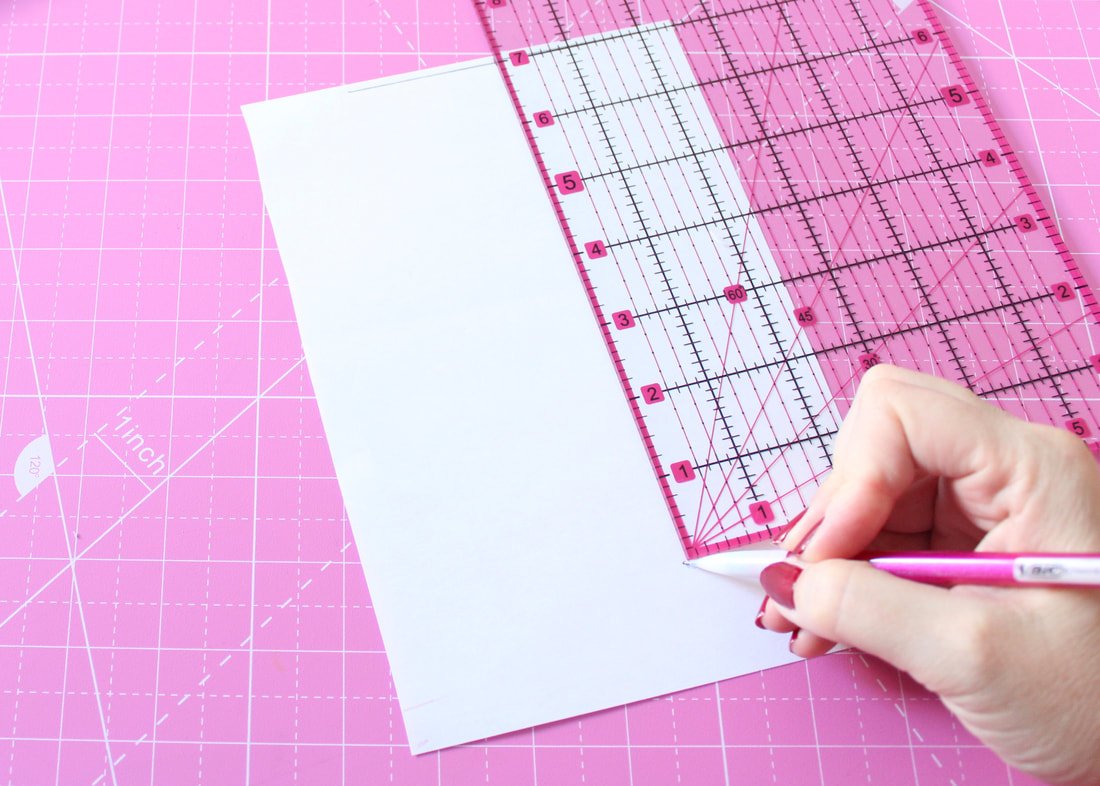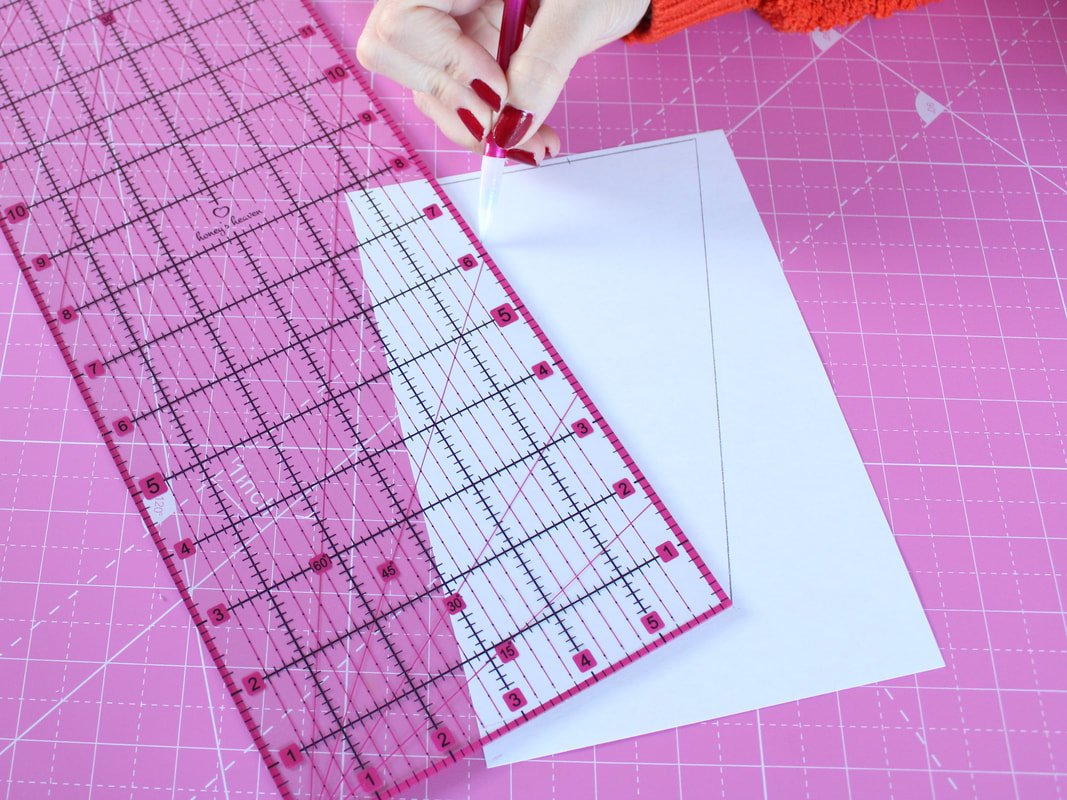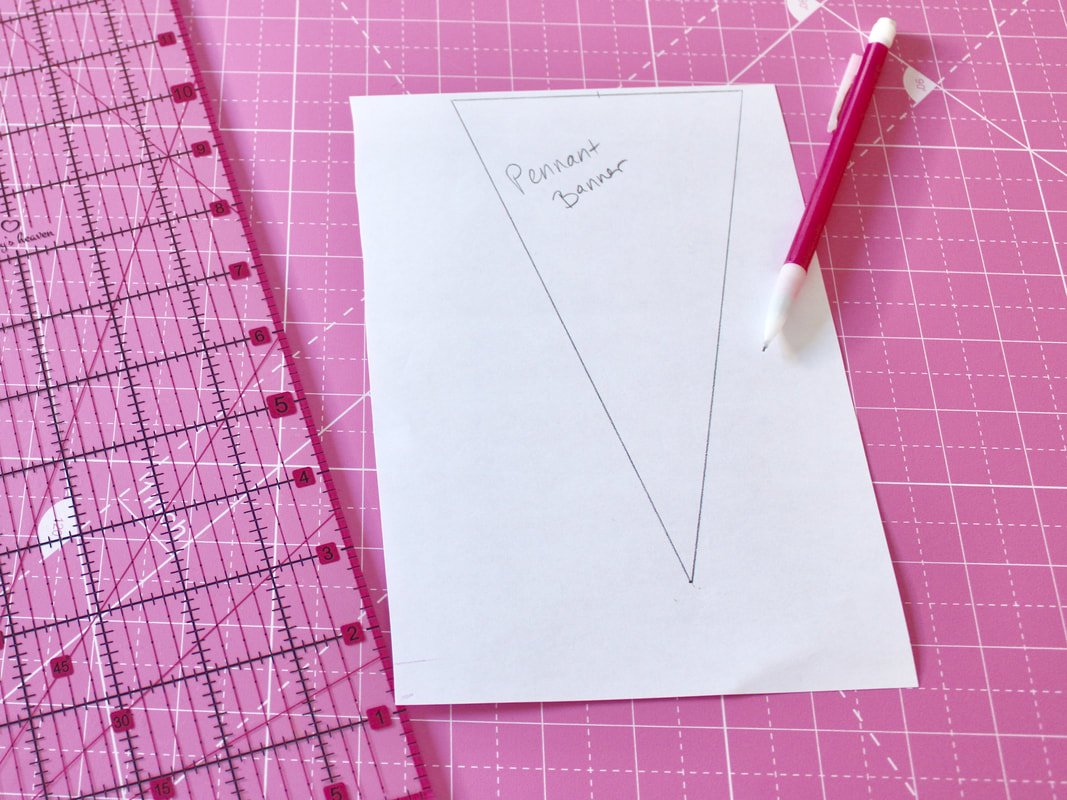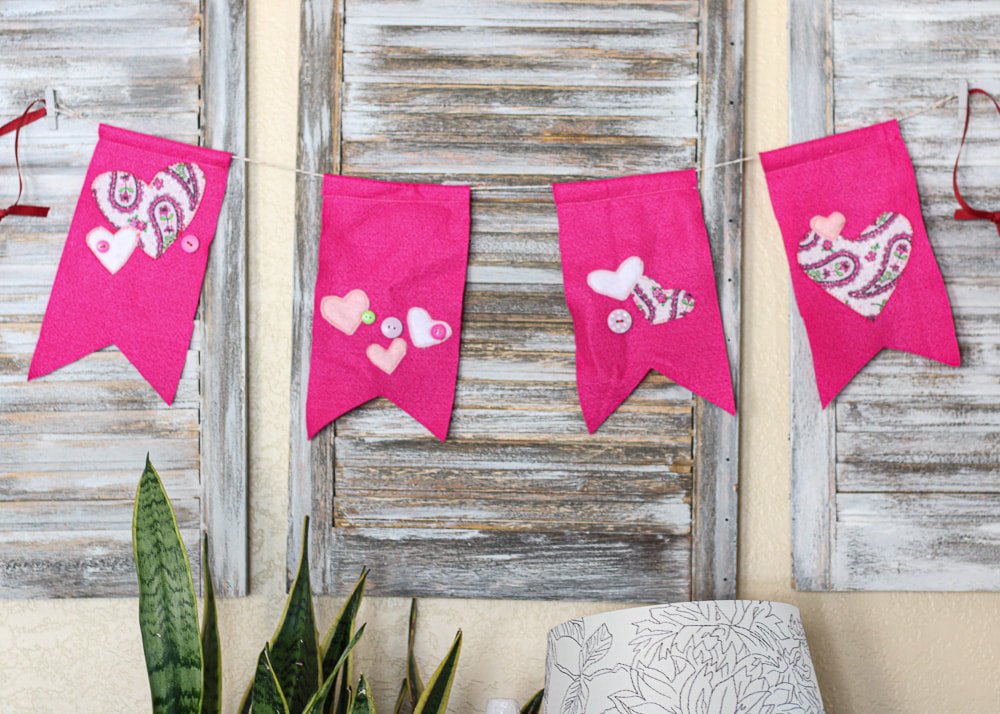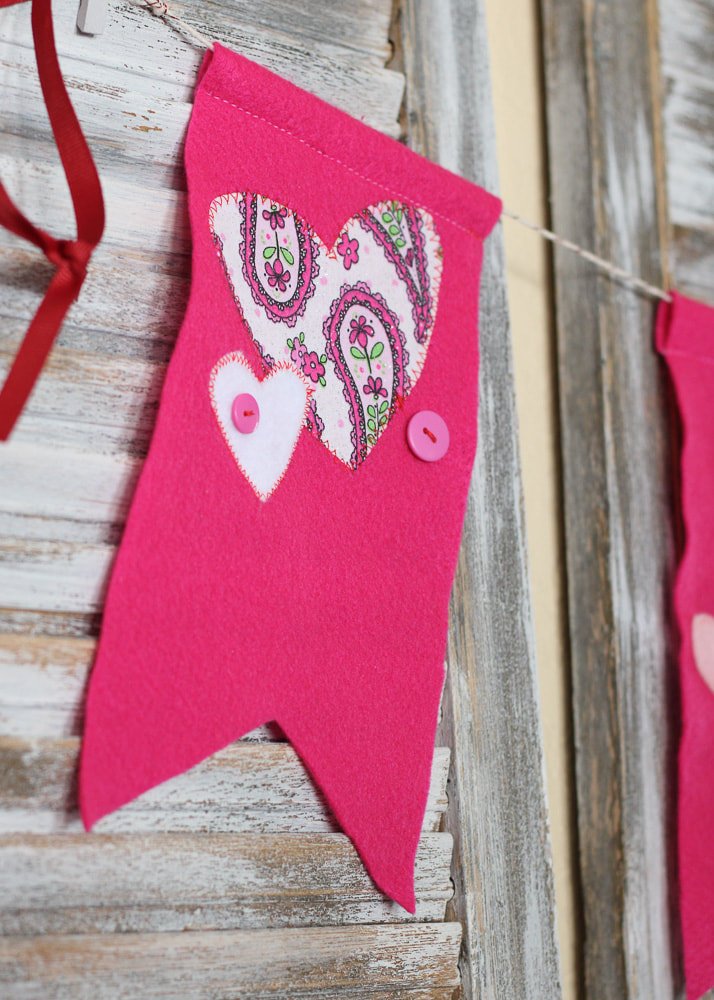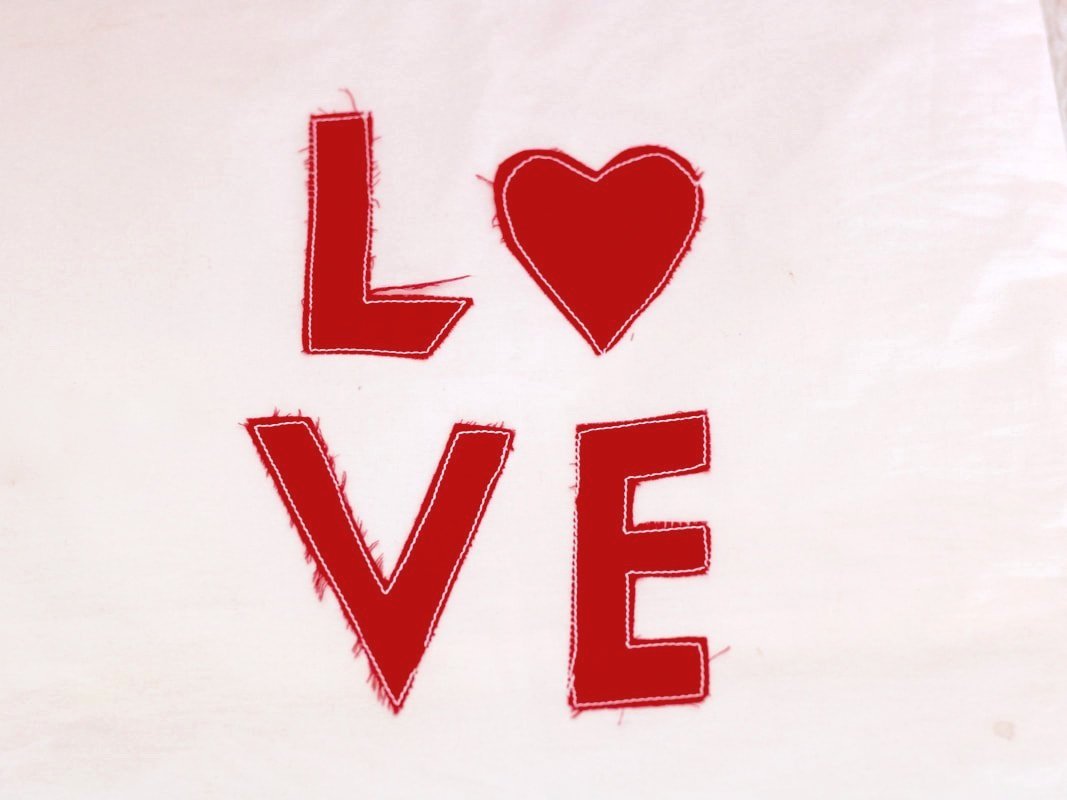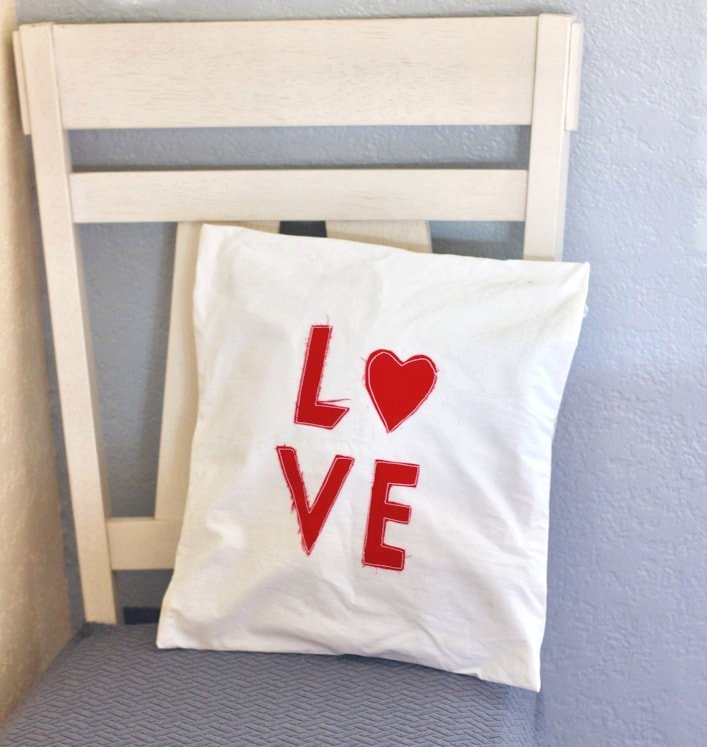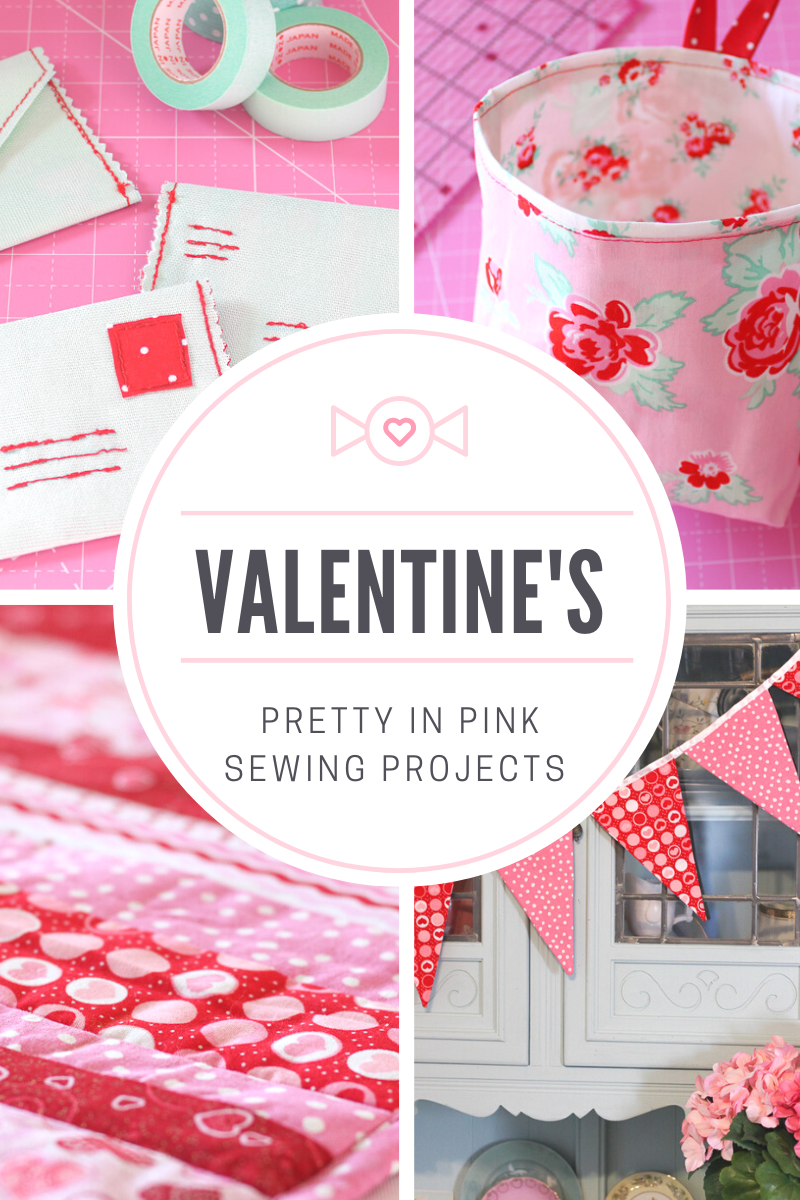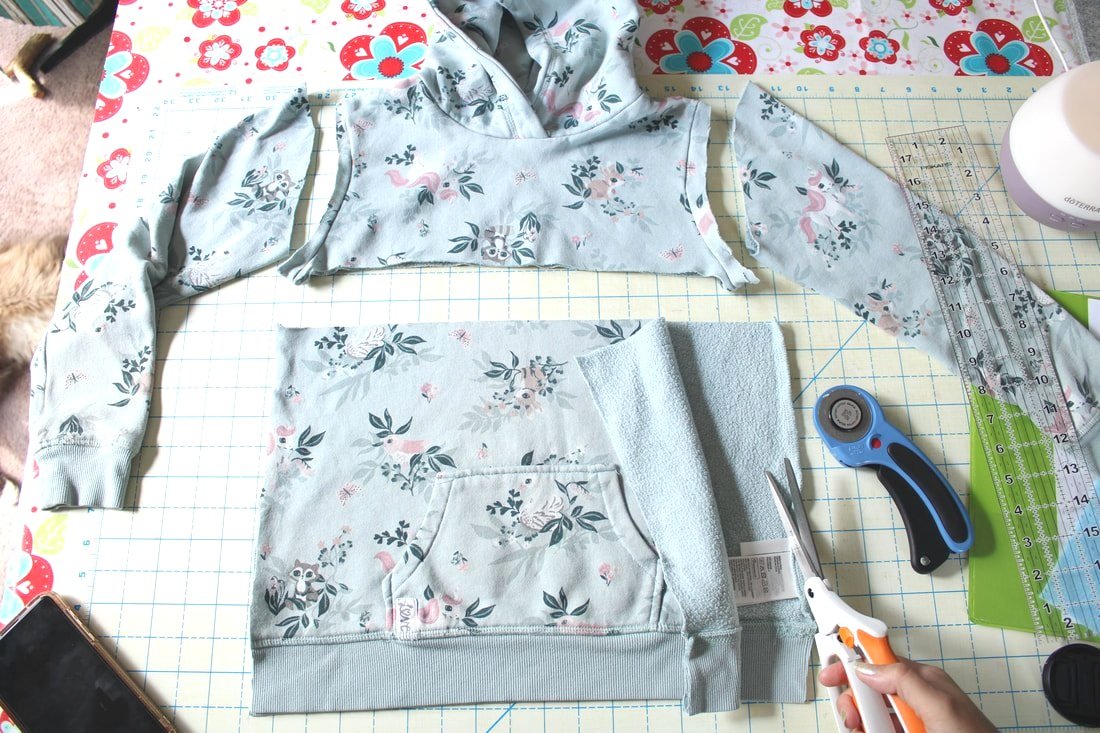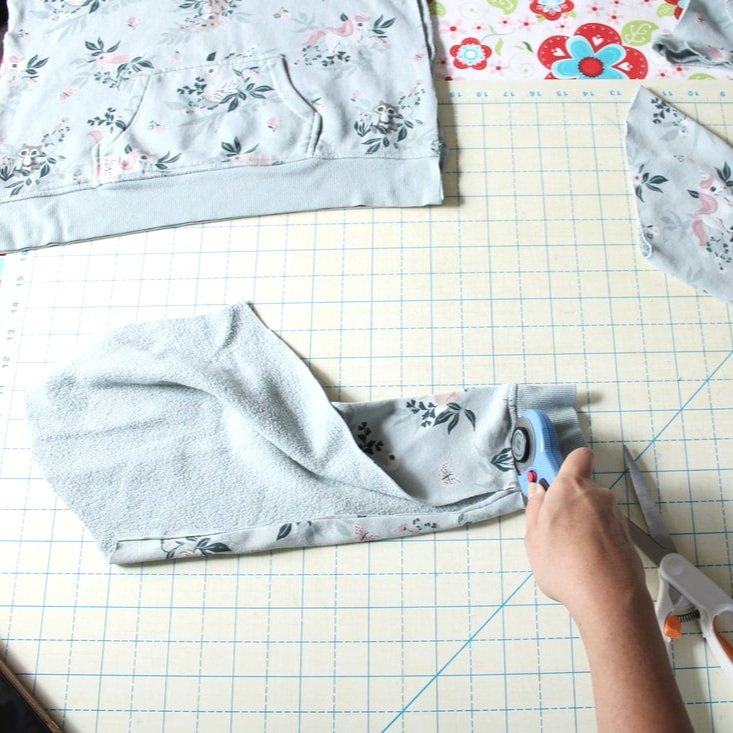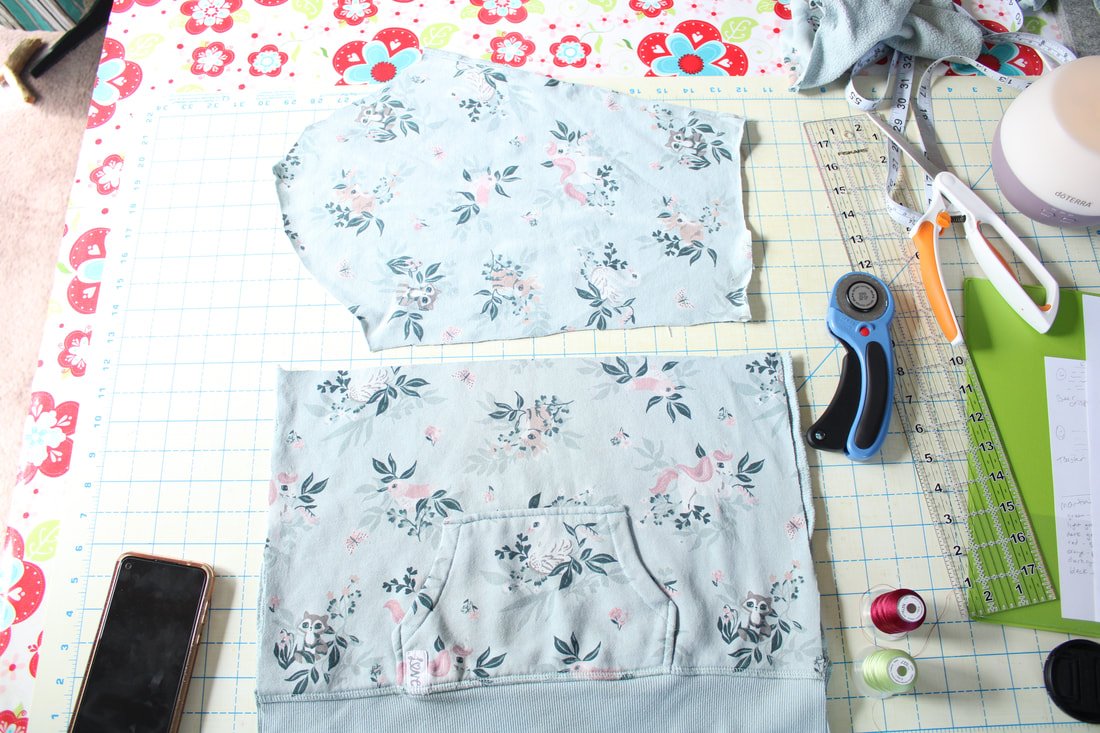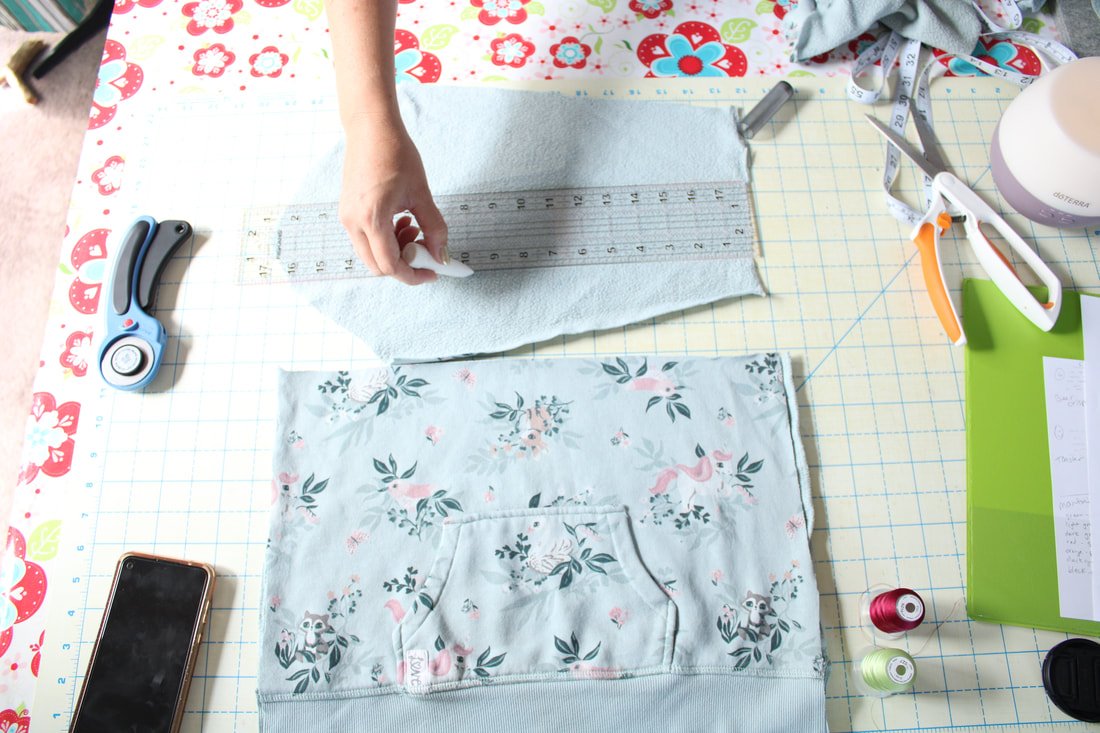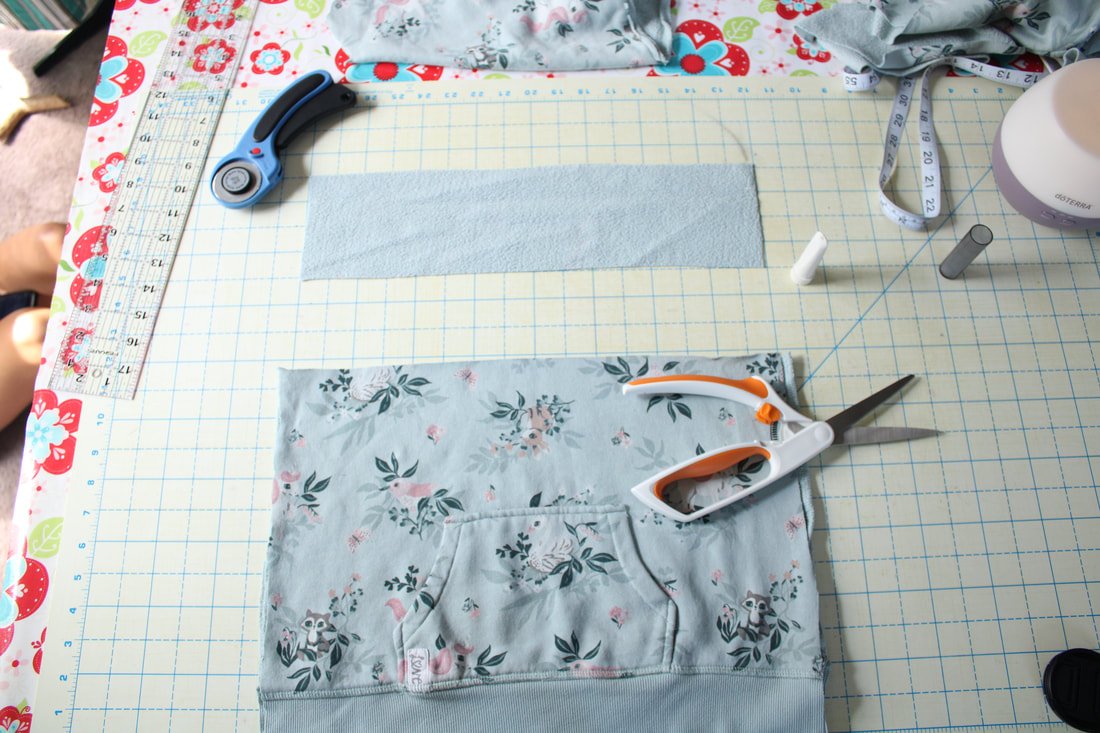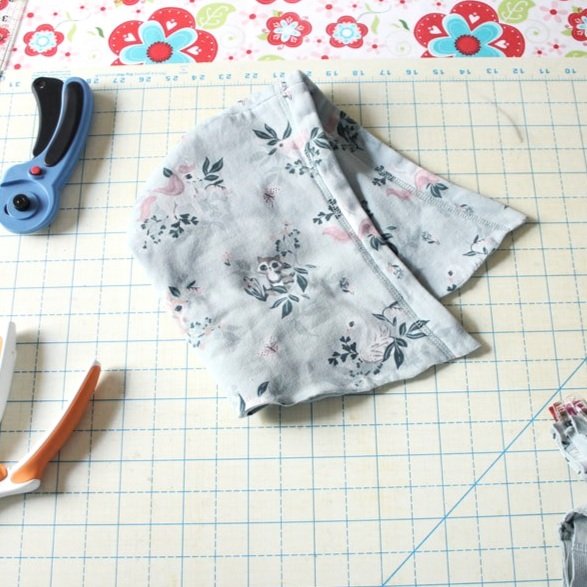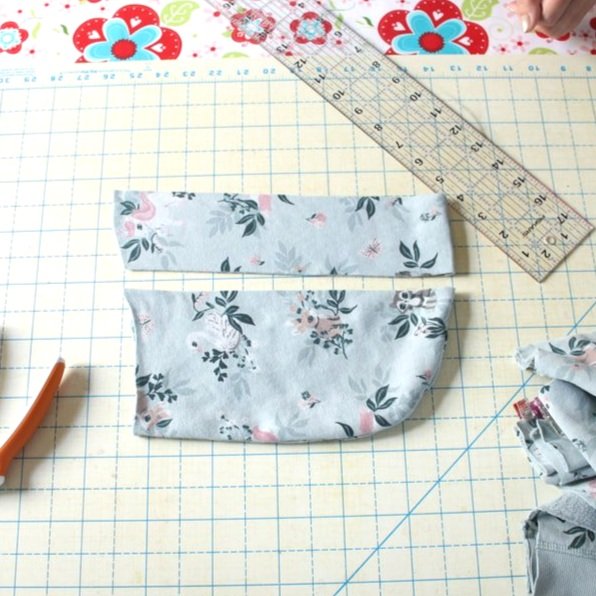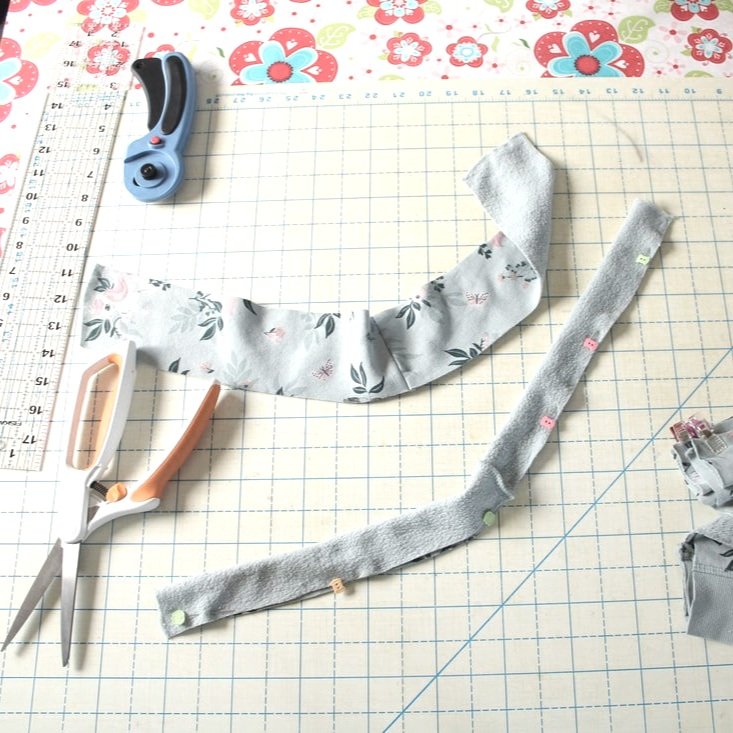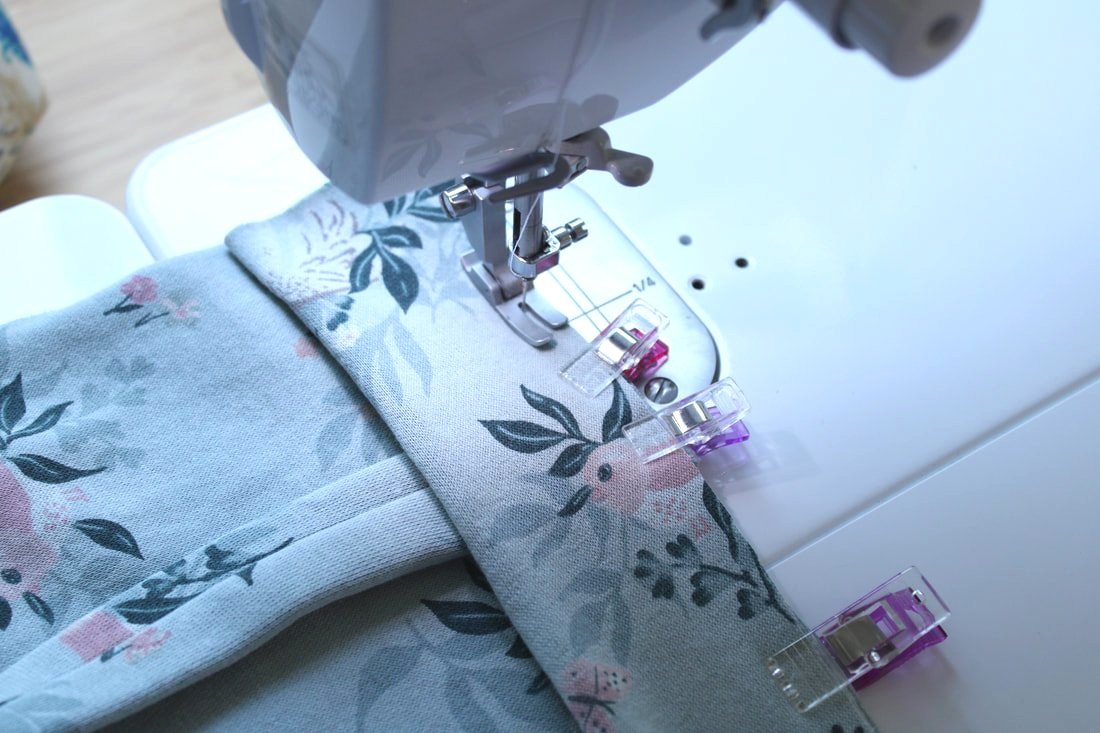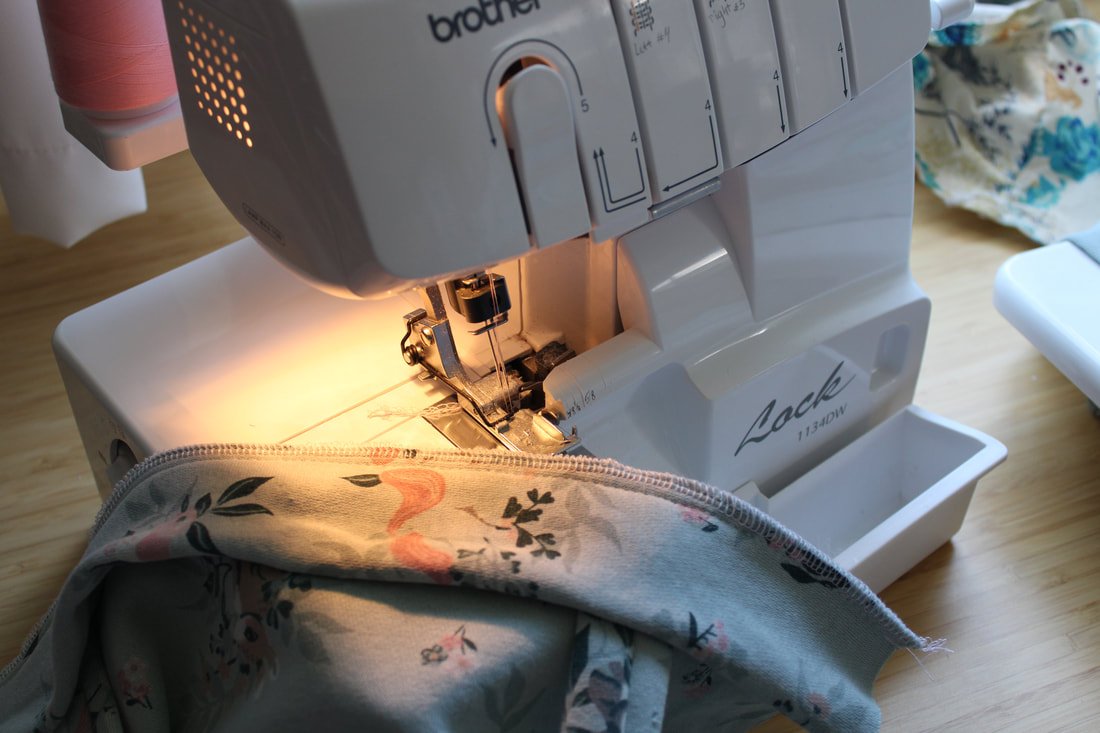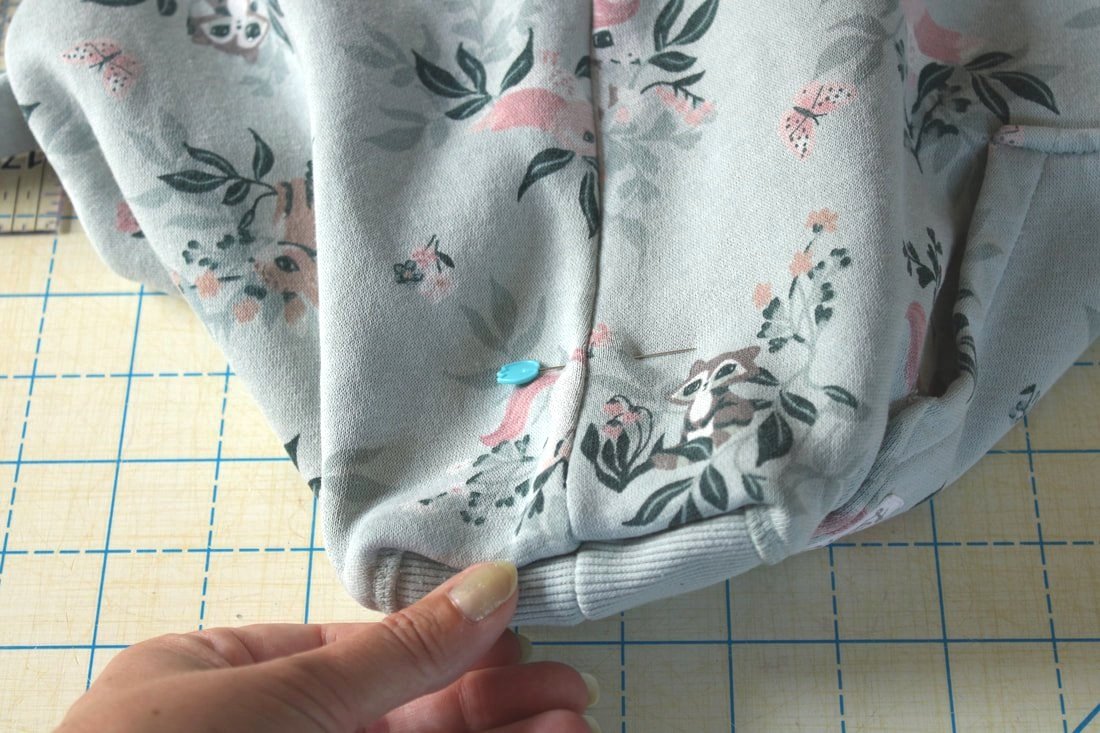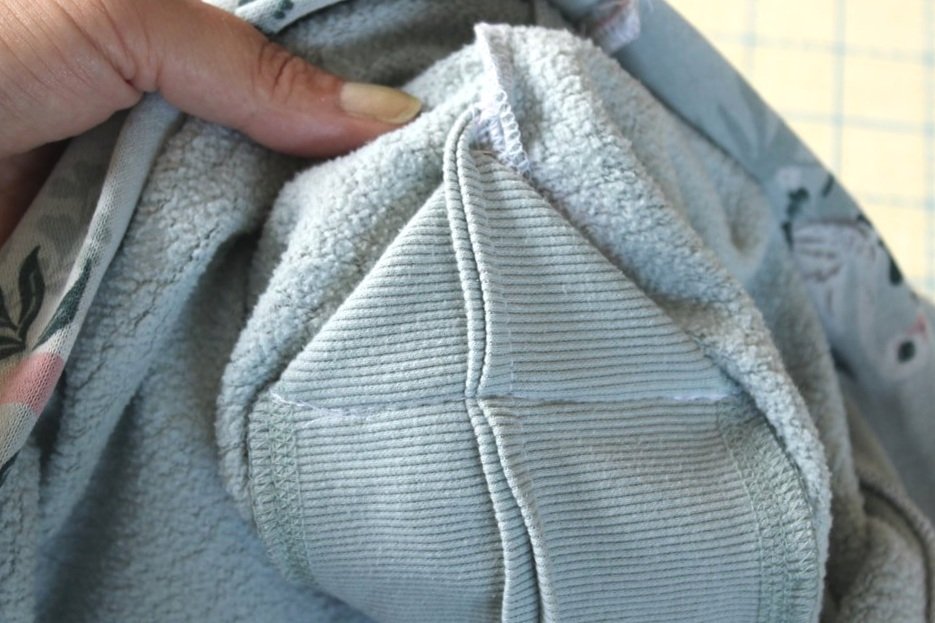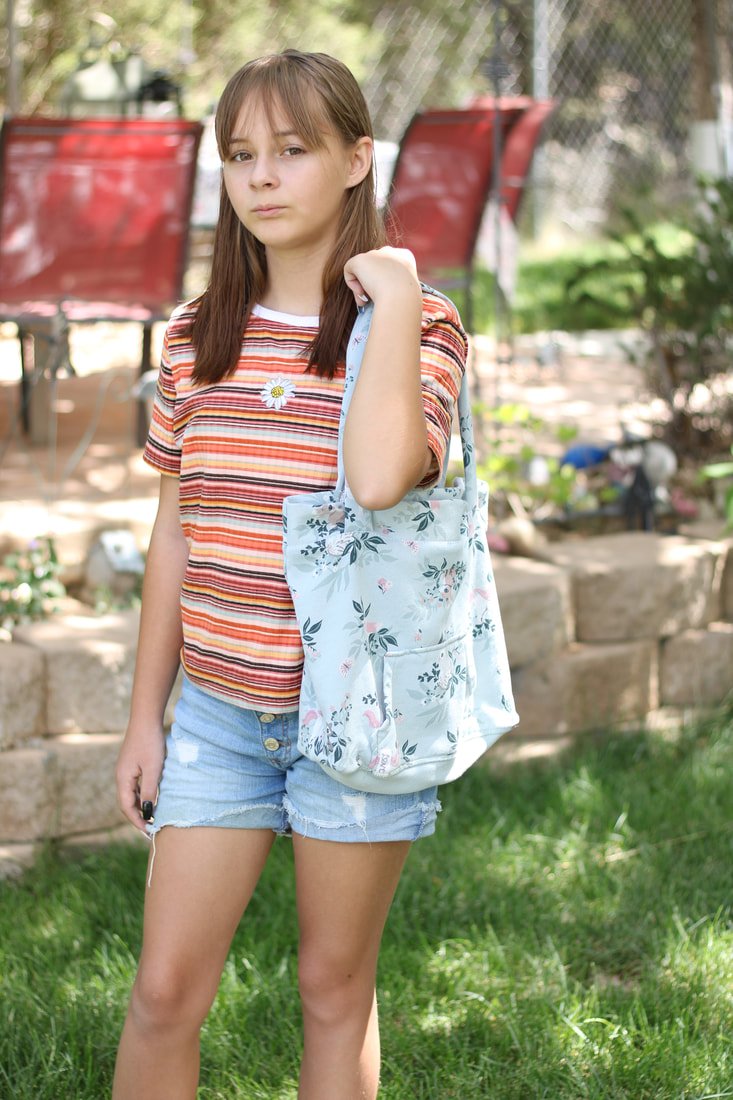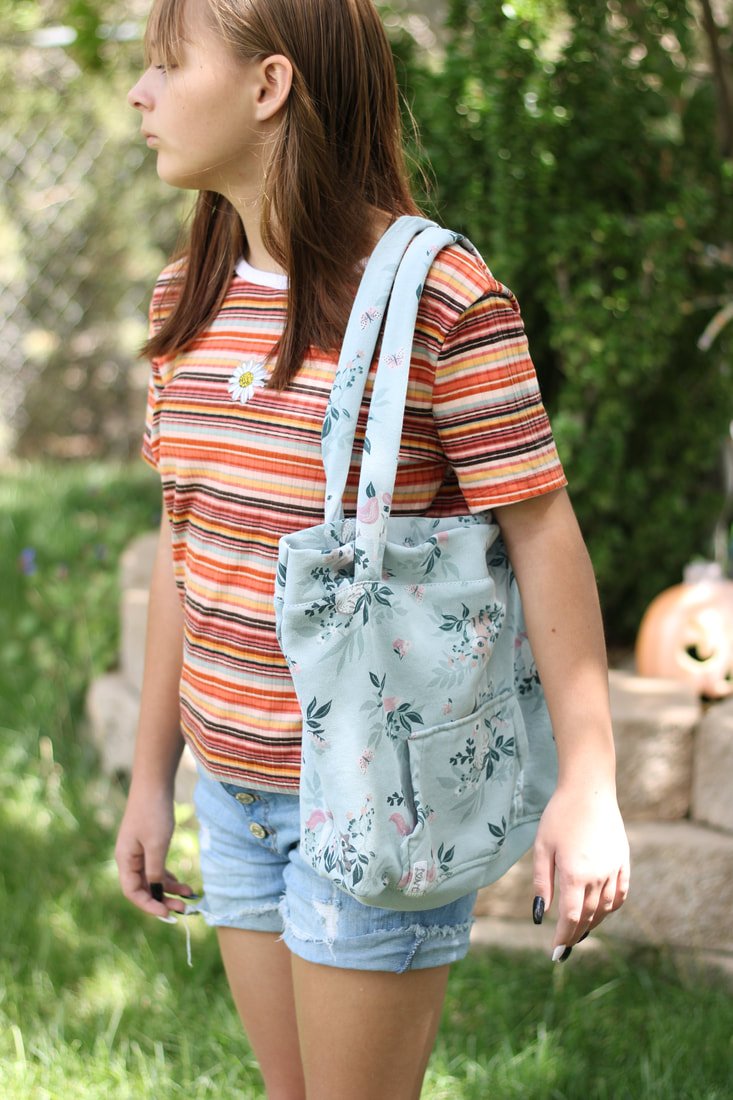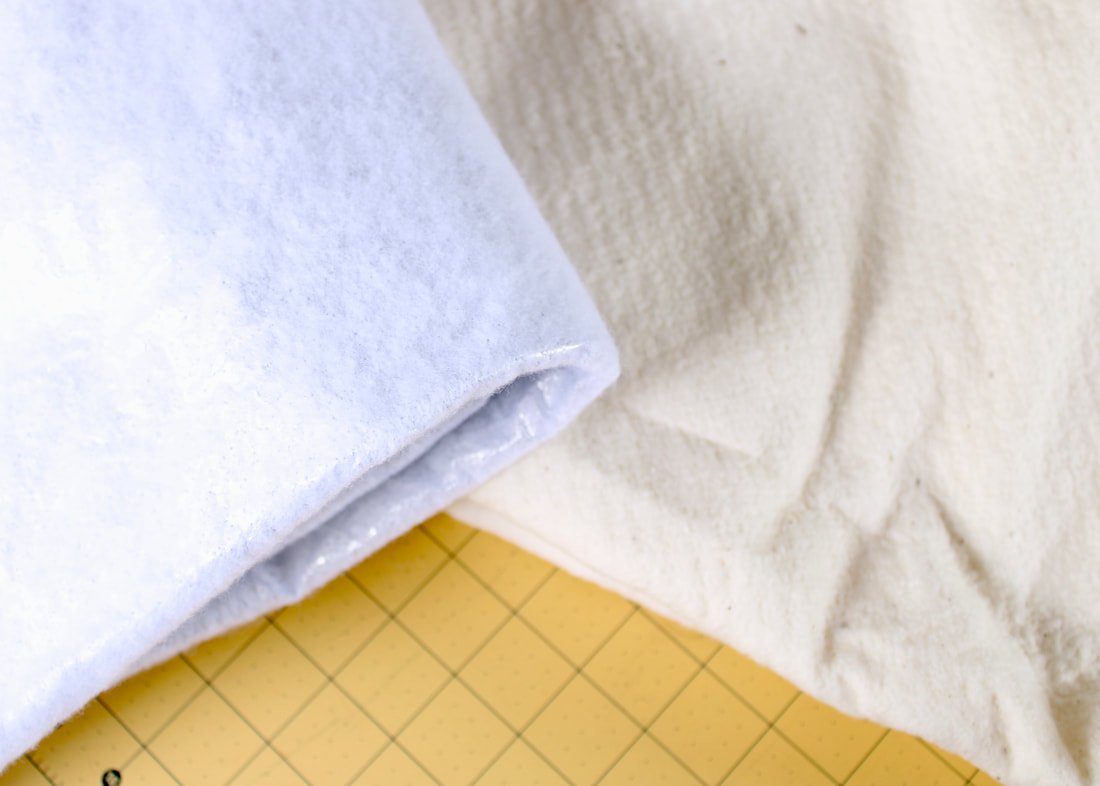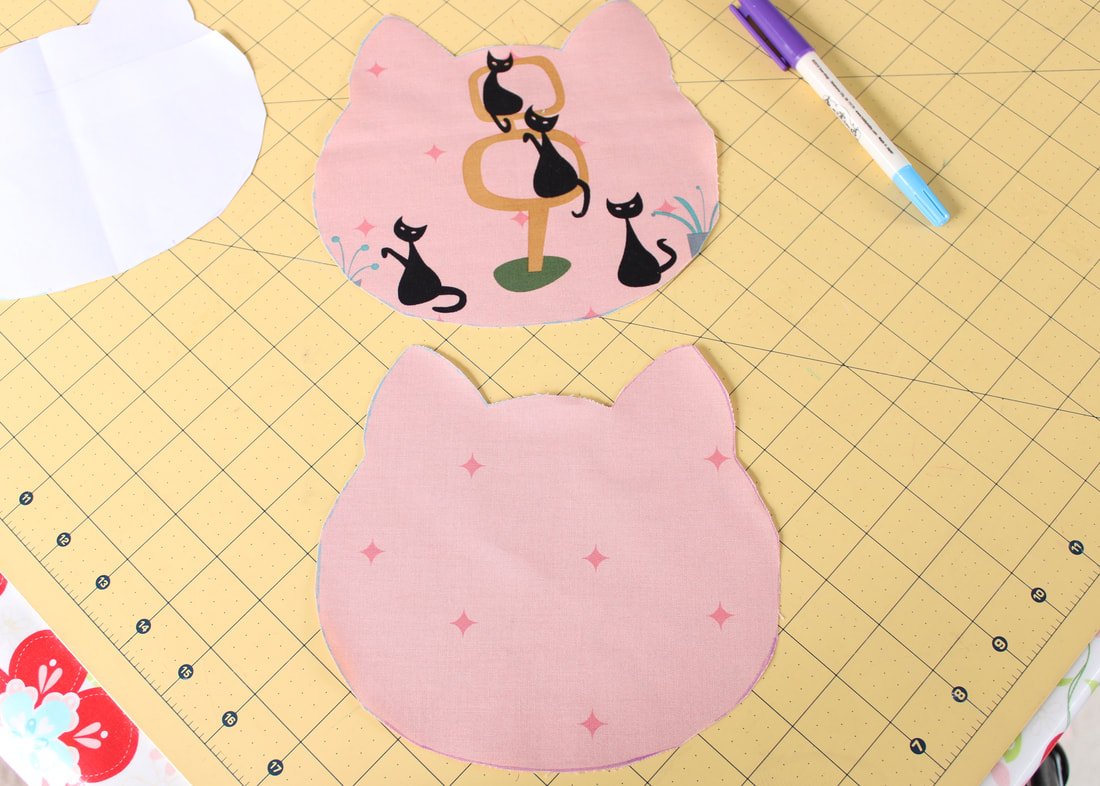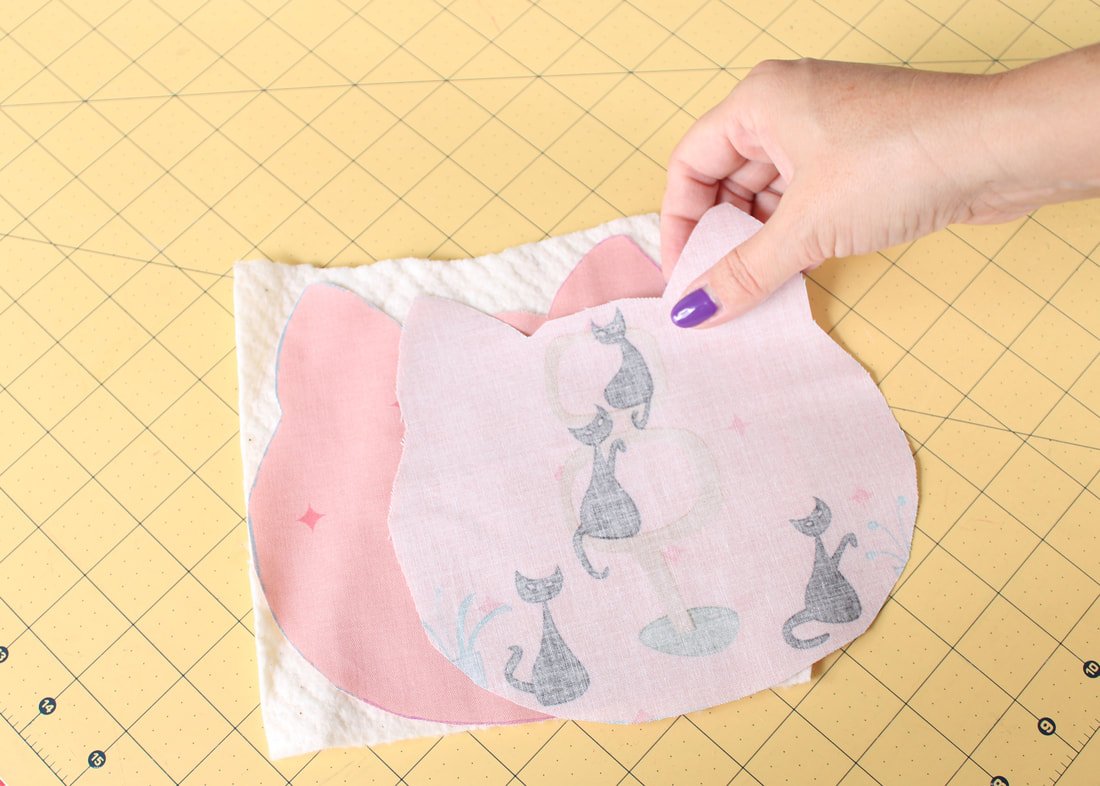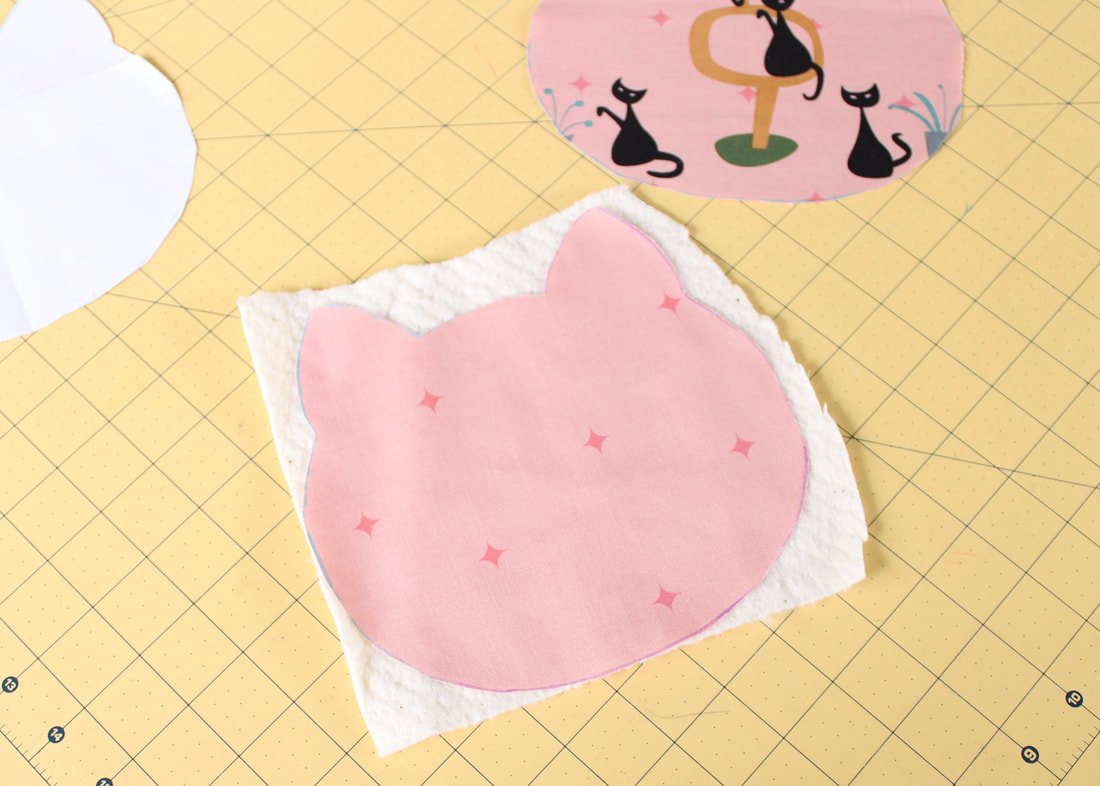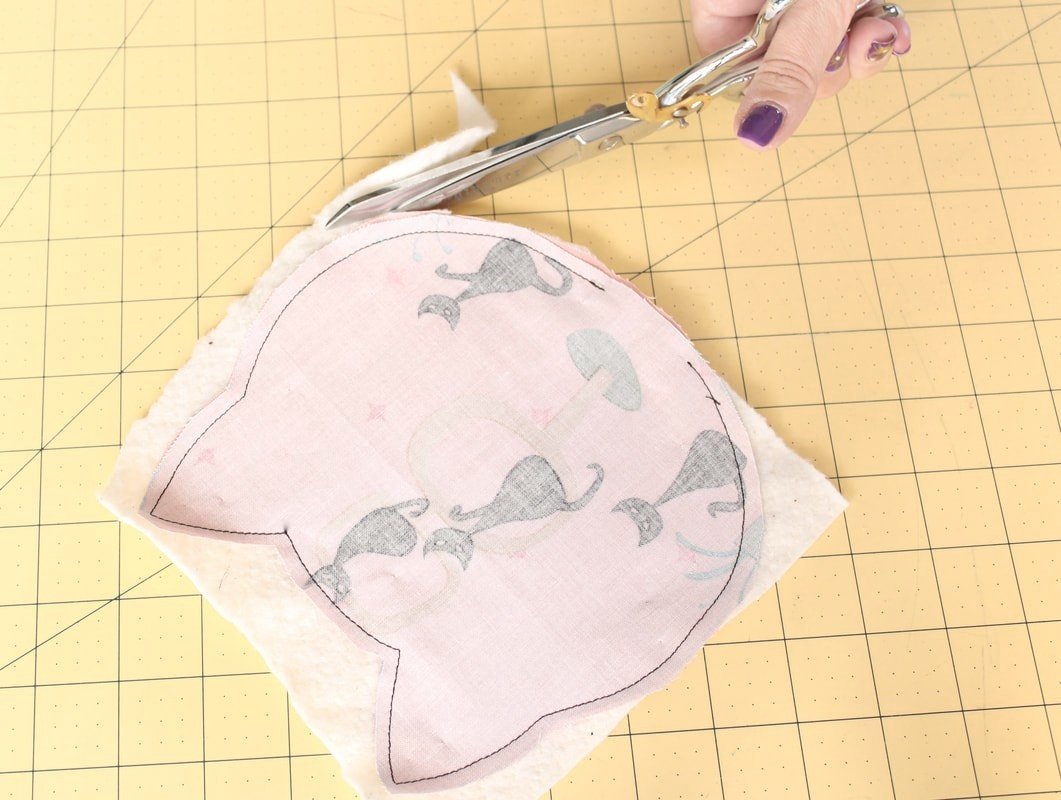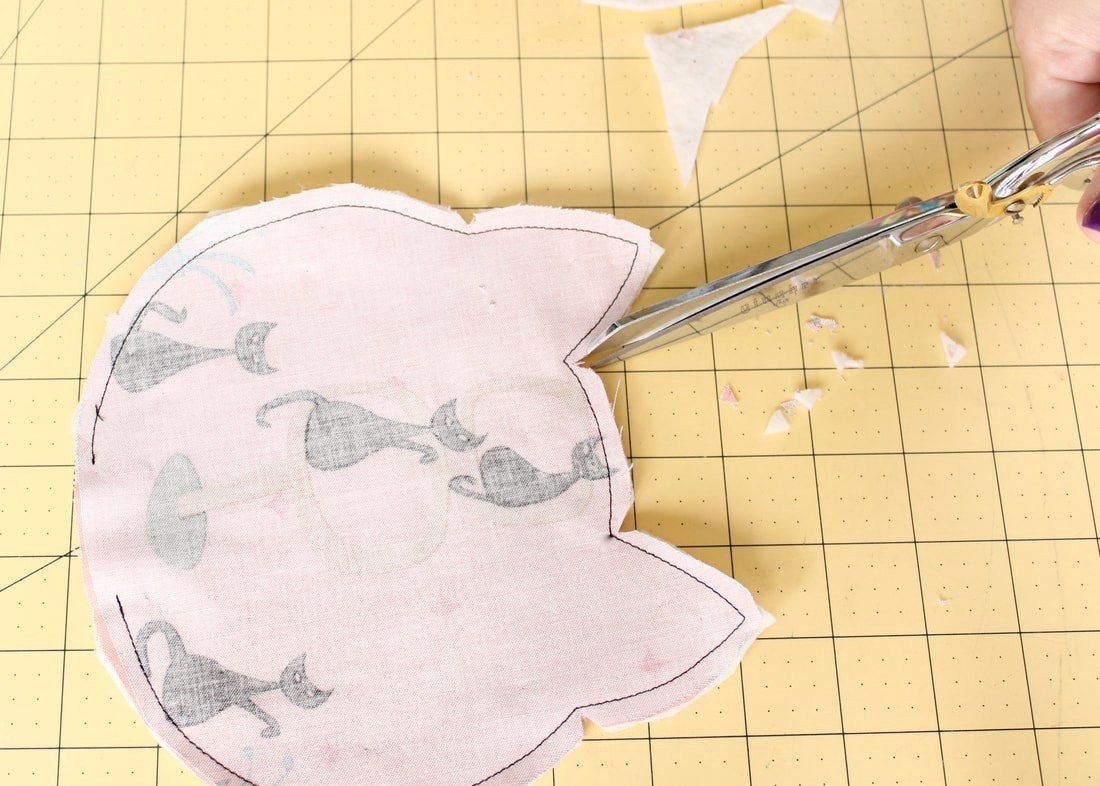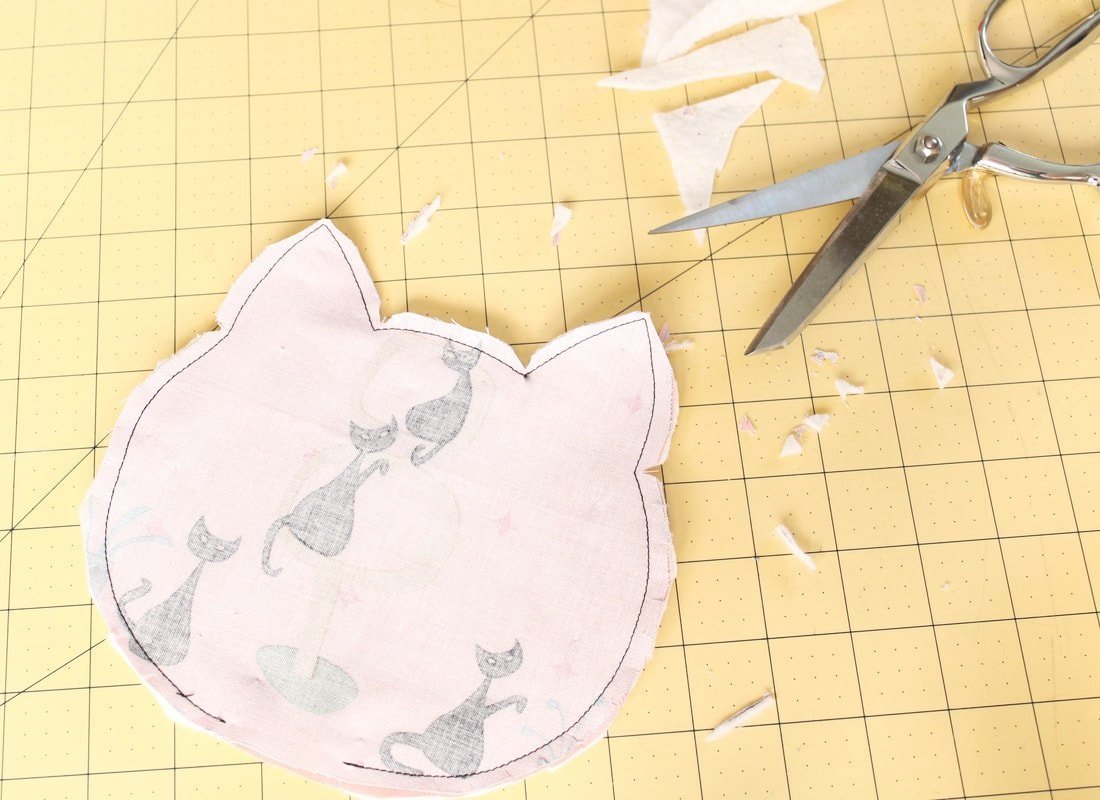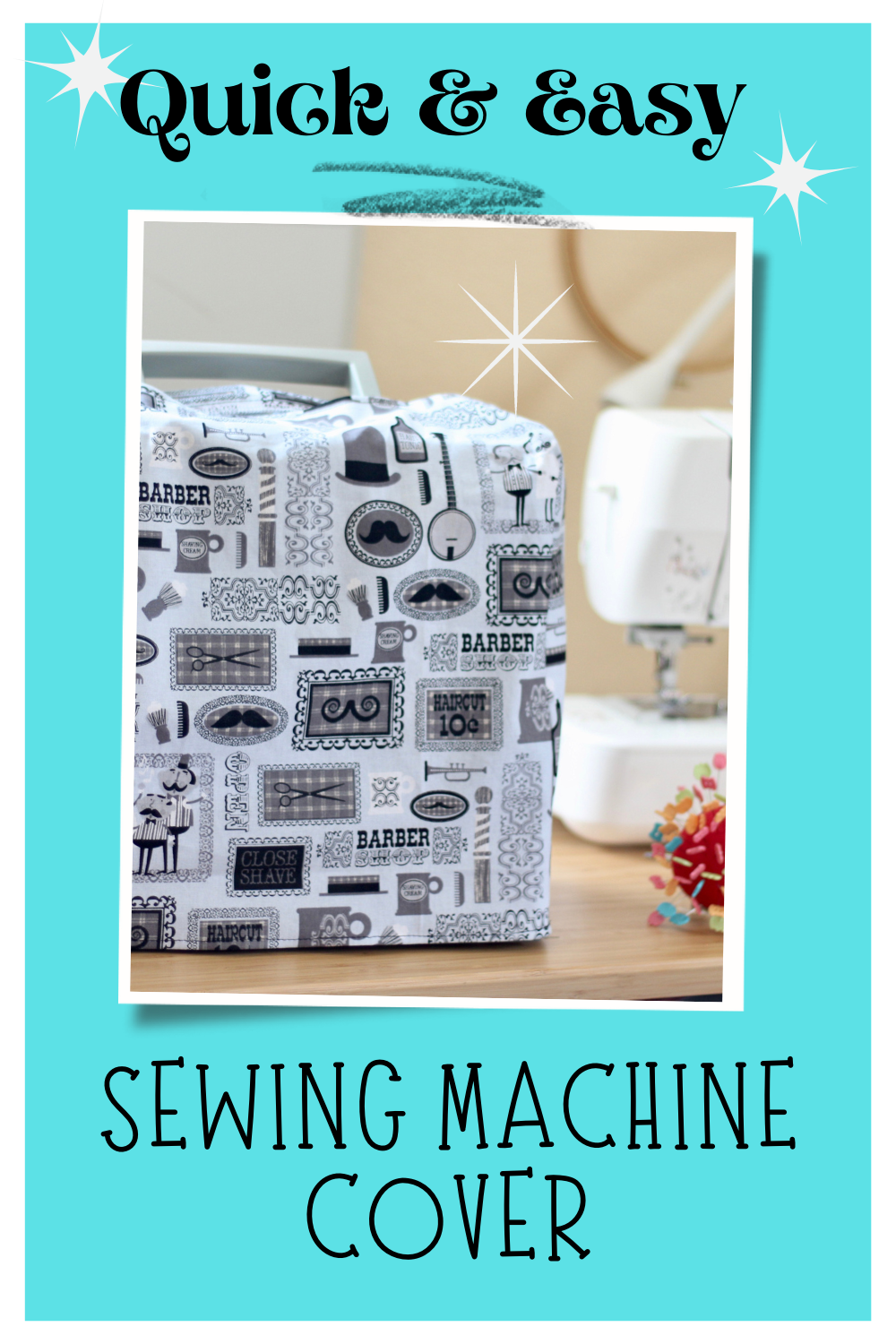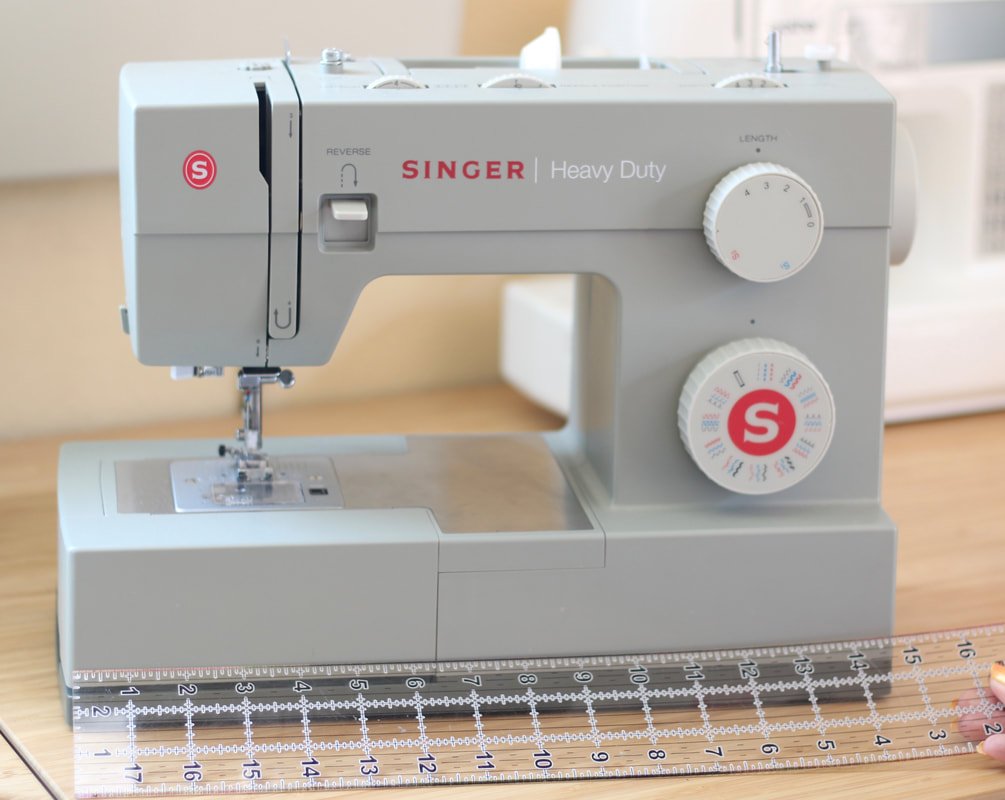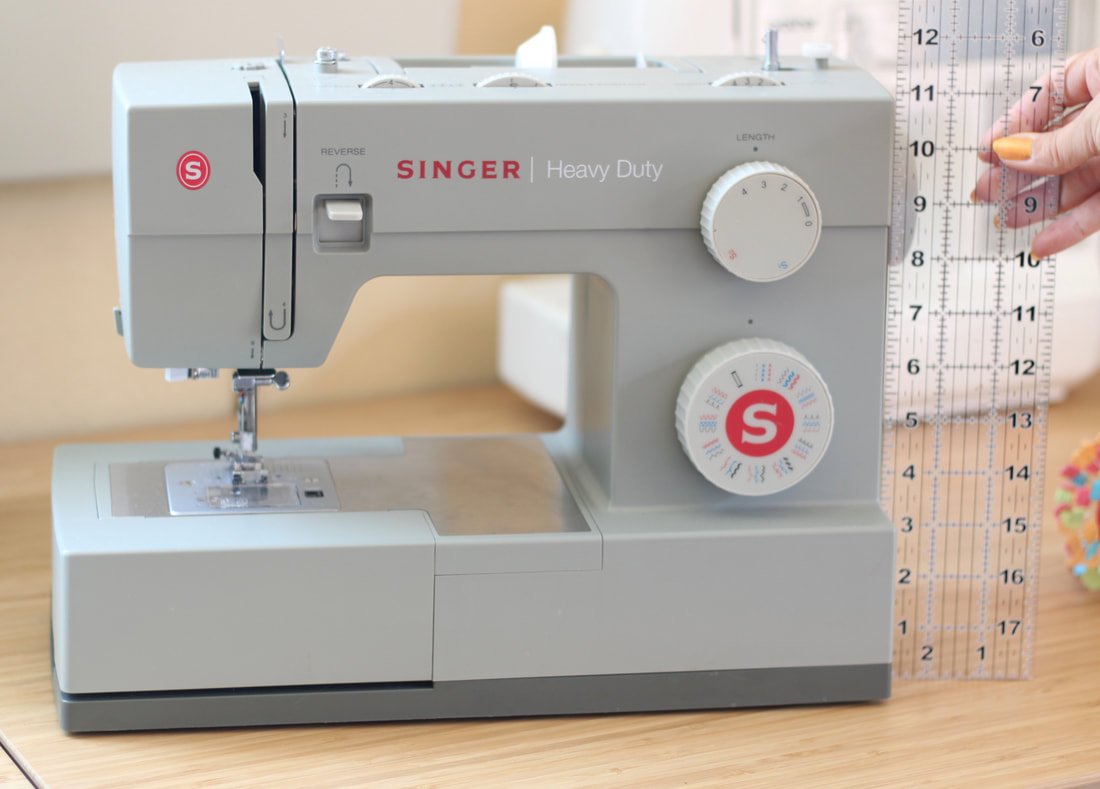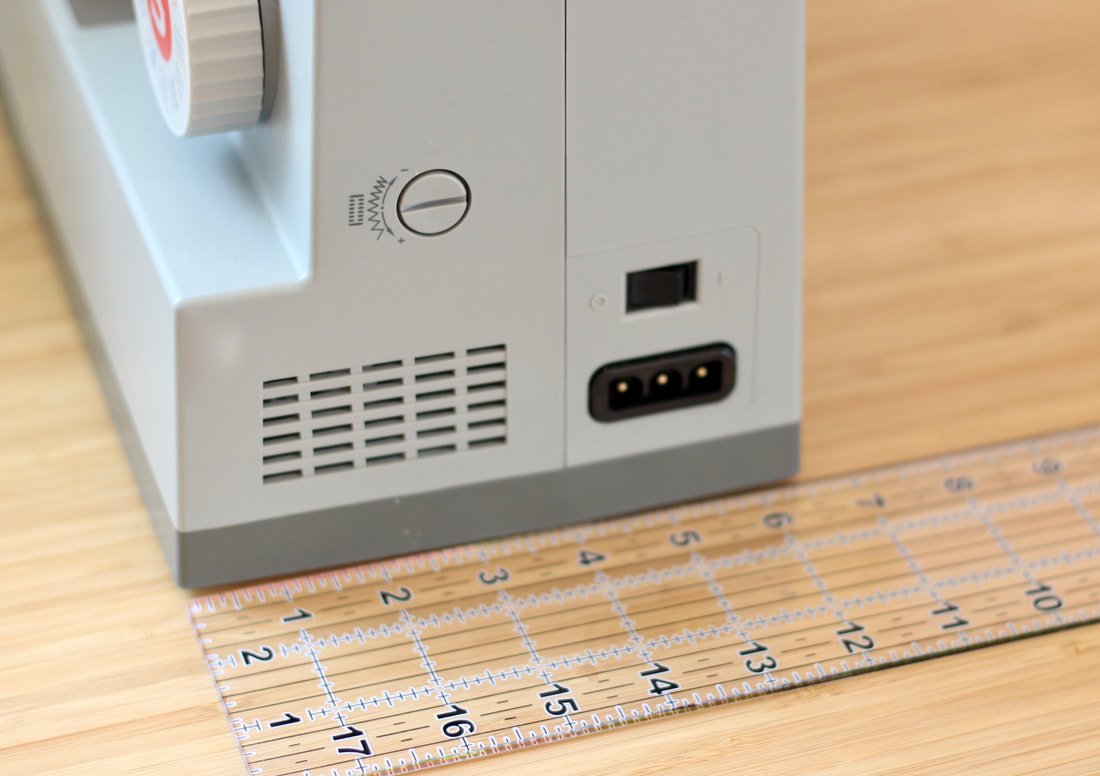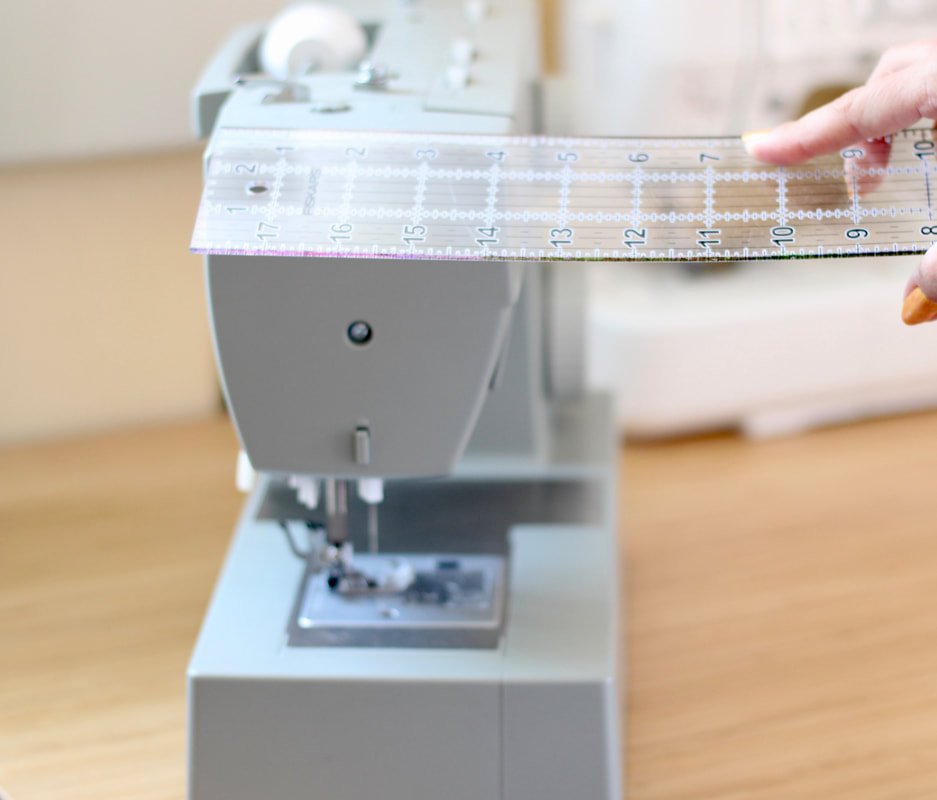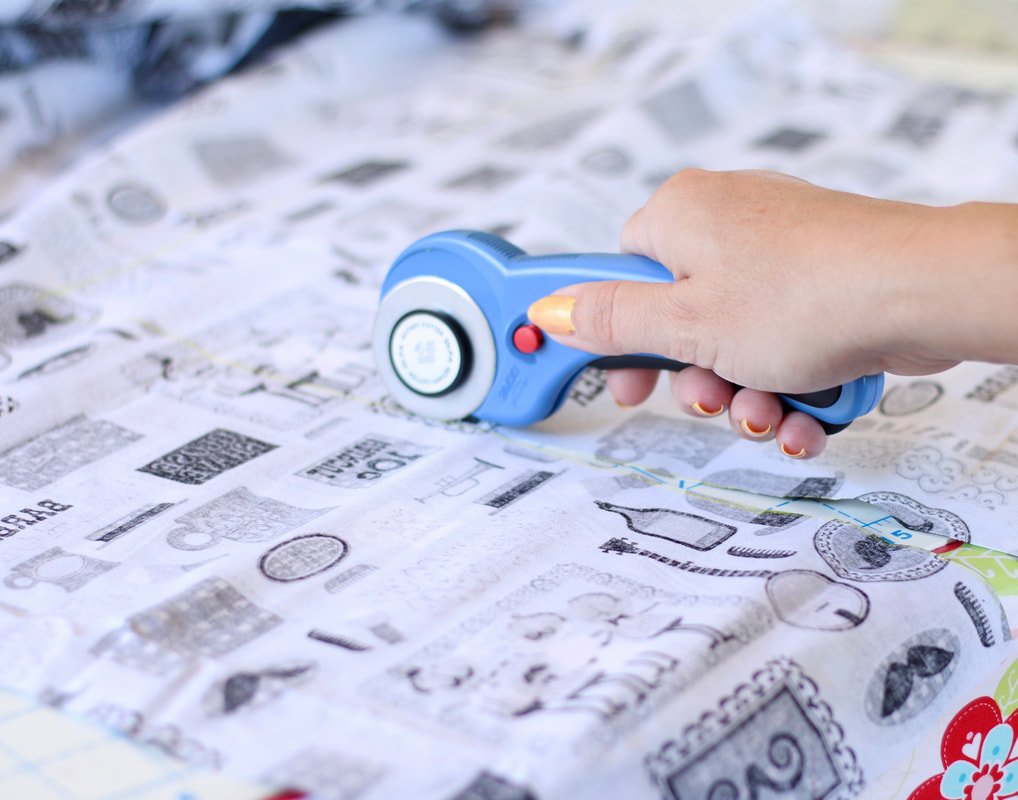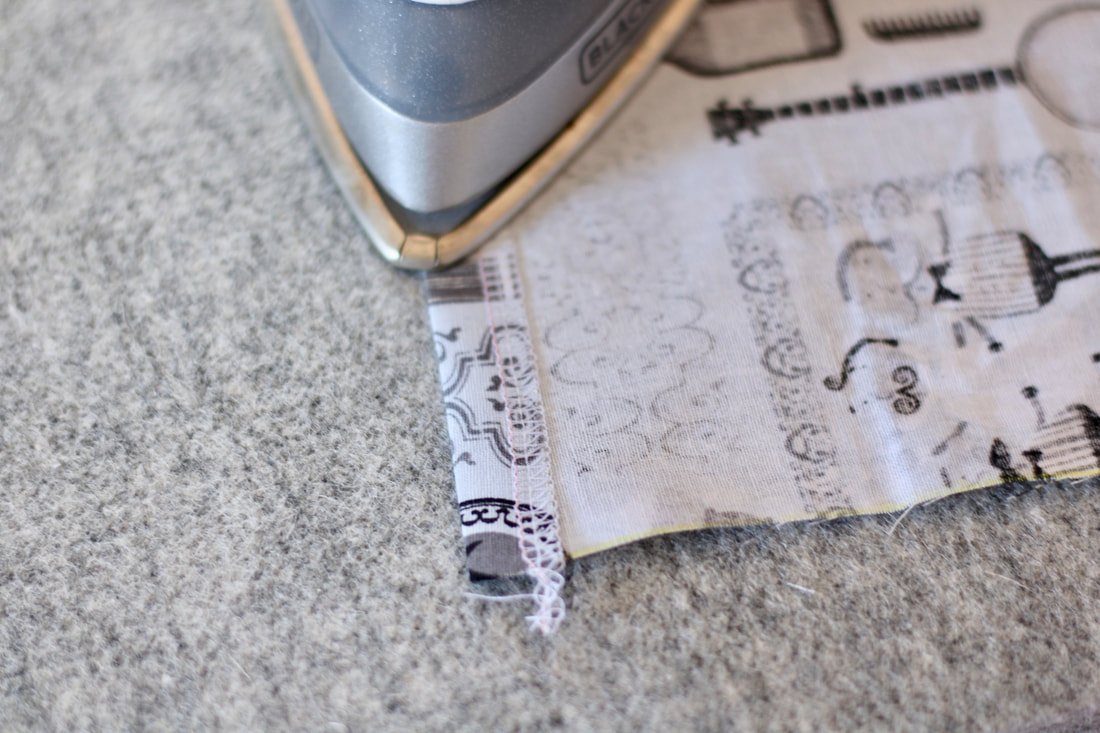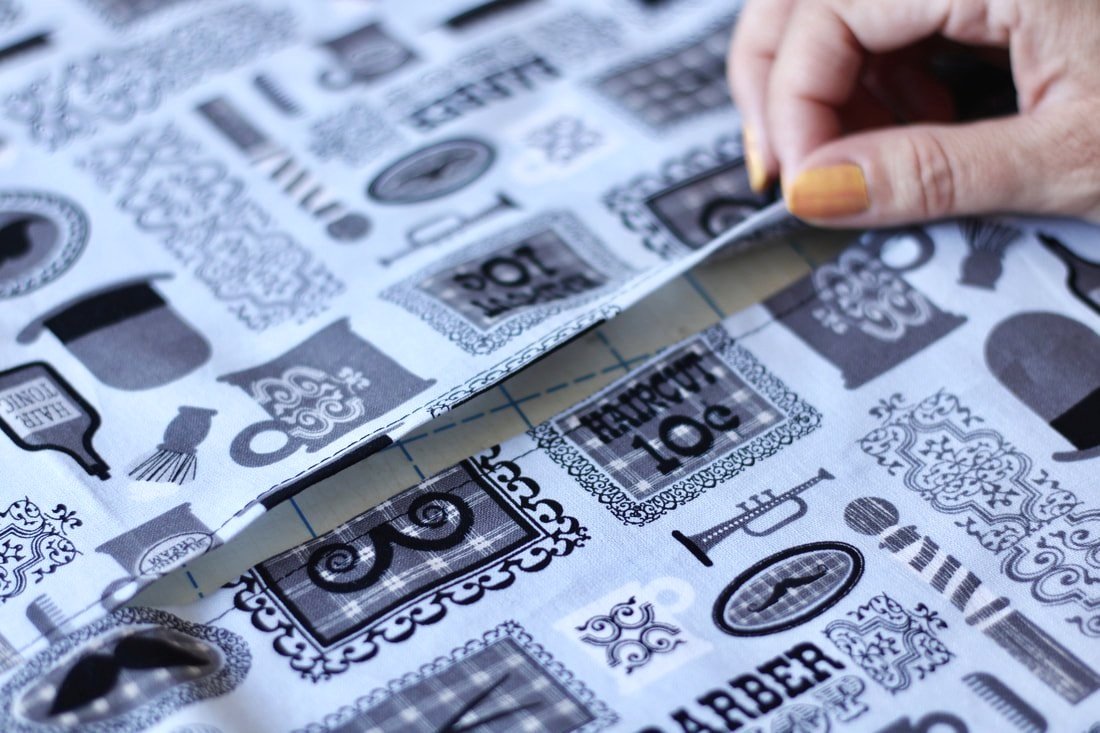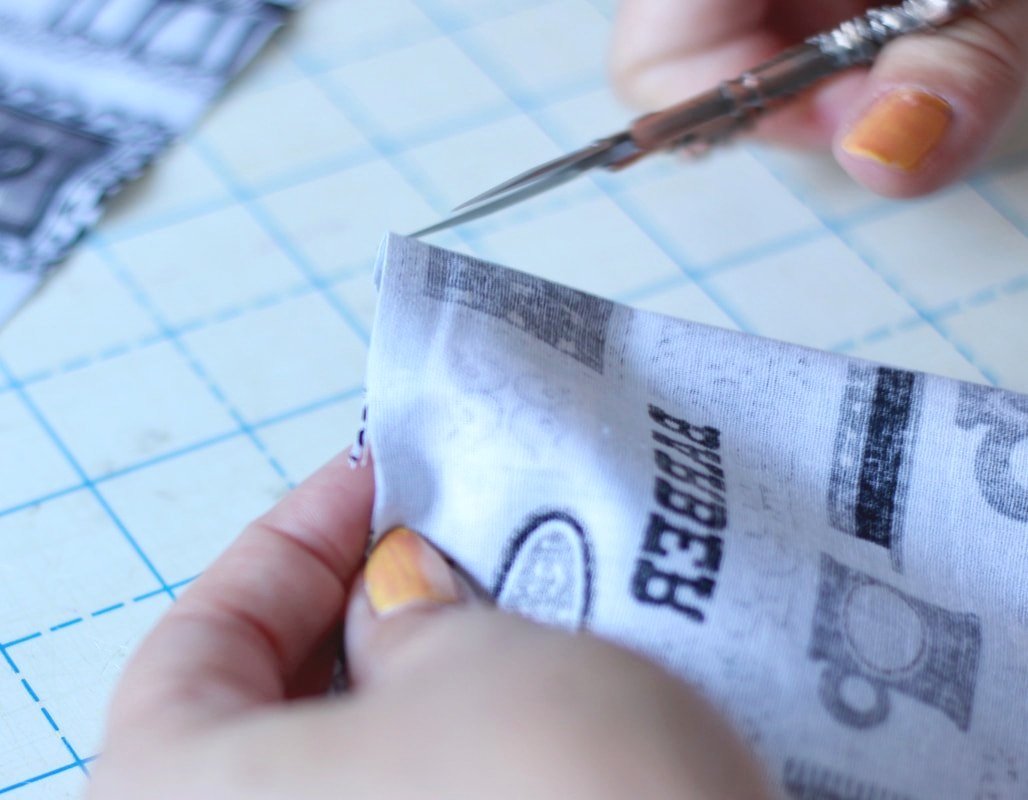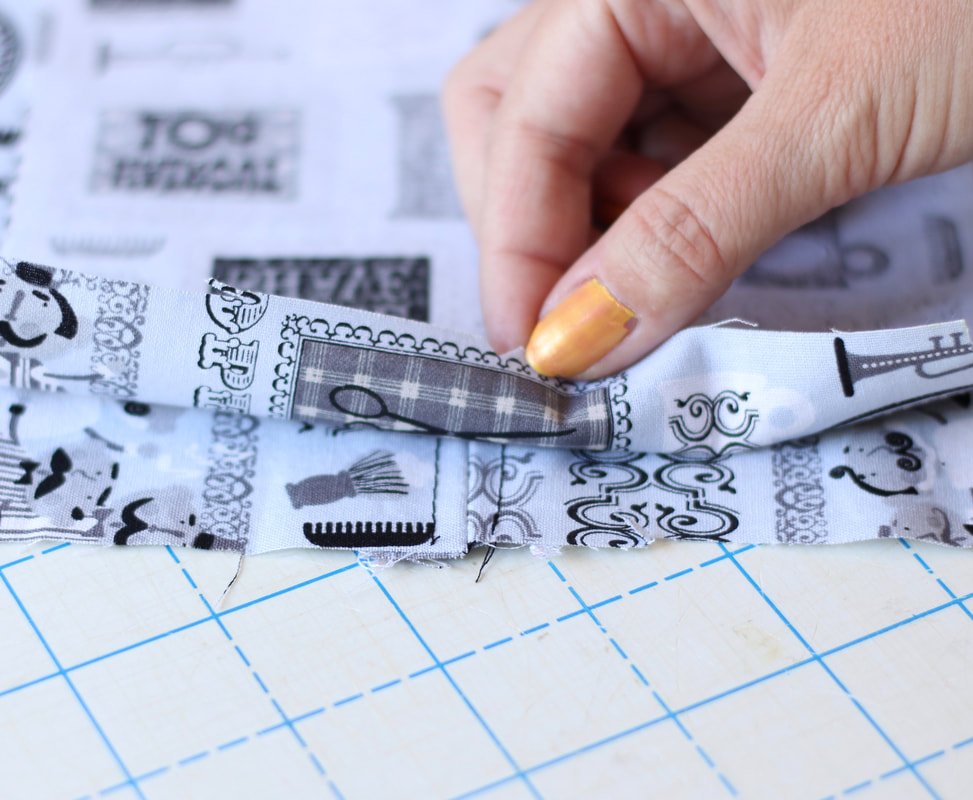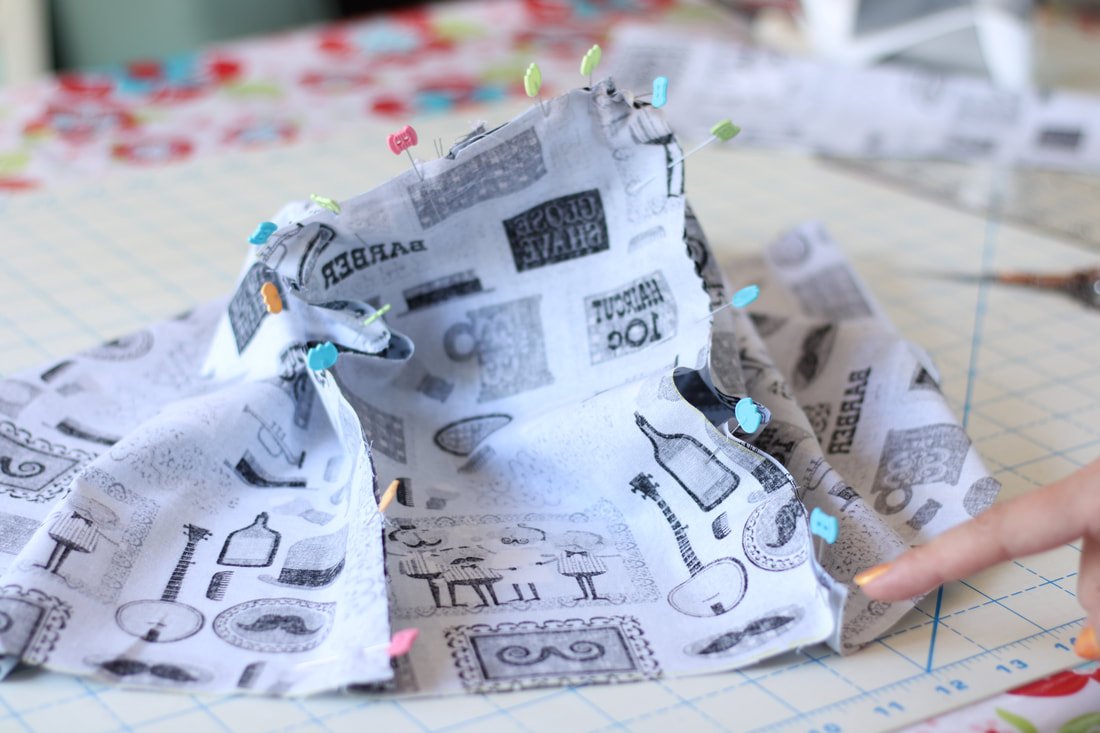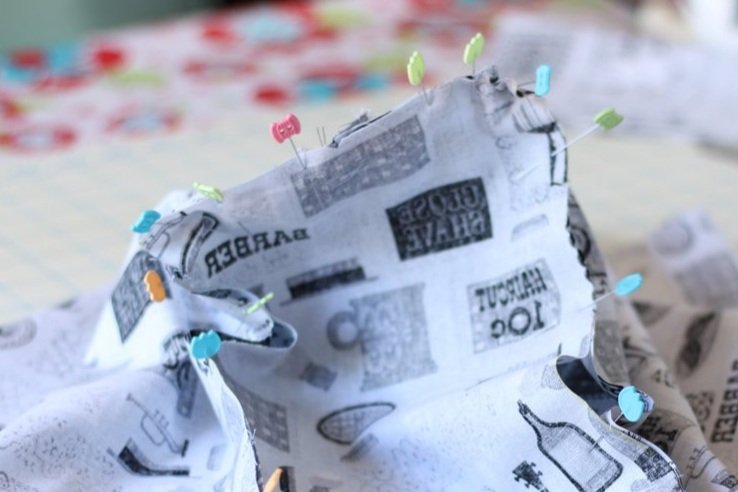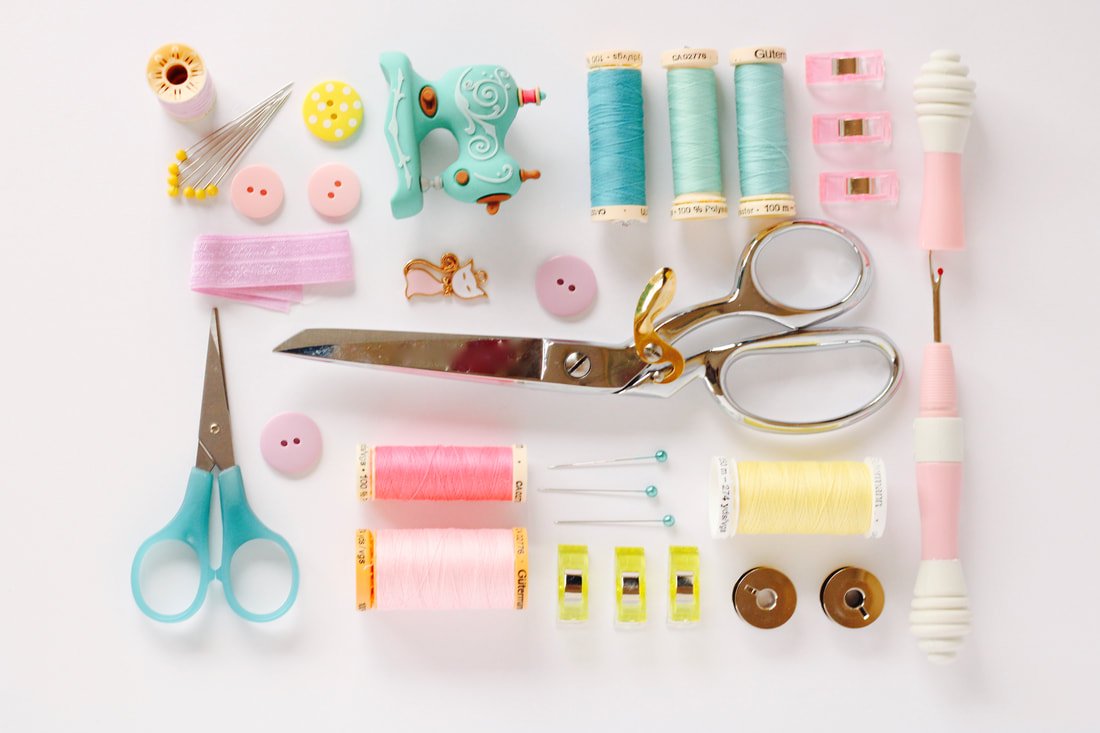
Pattern Reviews, Sewing Hacks, Tips & Free Patterns
Sewing Blog Besties
Making a Quilt, the Easy Way
Make a quilt the easy way! Follow this tutorial and choose your own quilting adventure. Squares and strips make for an easy and customizable quilt. Cut each piece as big or little as you’d like. Free-motion quilting isn’t scary. It’s fun and easy if you take your time and go slow. This is a great beginner-friendly dive into quilt making.
Cooking is fun, messy, and can be very delicious. Gardening is quite rewarding because its fun to watch things grow. Sewing, however, is my main jam! I love making bags, gifts for others, clothes, and so much more. Sewing is definitely my most beloved hobby. However, I was never a fan of quilting. To me, quilting and sewing are two different hobbies. Are you team sewing or quilting?
I never loved making those strip pieced table runners, or small quilts. Too many rules to follow. Too many tiny pieces of fabric to cut. Cutting all of those small pieces to then sew them together again, is my absolute nightmare. But, something wild and crazy happened during this past Fall. A Halloween quilt came to life! I don't remember what planet I was visiting, but I decided to make a quilt. Spoiler alert, I made a Christmas one too. And, I loved every minute of it. It was so much fun! Why did I change my mind? Well, I didn't follow a pattern. I did my own thing entirely and loved the process and final result.
If you're not a quilt fan, I beg you to try making a quilt following your own rules. Read along for some easy tips to create your first (or next) quilt. Am I a quilter now? I don't think so. But, I did enjoy making both of the holiday lap throws. As you read, you'll notice more of the Halloween quilt. I took more process photos of that one but, there are some Christmas ones too.
Disclaimer: I am not a professional quilter. I probably do some cringe-worthy things here but, this is how I made my two quilts. The best part? I didn't want to set them on fire in the process. Sewing is supposed to be fun and not stressful. And, after all, it's just fabric and we all own a seam ripper or two. Let's get quilting!
Supply List:
Fabric. Lots and lots of fabric. 1-3 yards for the backing. 2-3 yards of various coordinating colors, patterns, and styles of fabric. It might be easier to start with 4-5 different fabrics first.
A package of batting
Quilting rulers
2-3 Spools of thread
3+ bobbins
Quilting Gloves (I use Grease Monkey auto ones)
KK-100 Spray adhesive
Free motion quilting foot
Patience and lots of snacks
All the Fabric Pieces
A quilt is a fabric sandwich, more or less. You have a top, which is all the pretty pieces. The middle is the batting layer. The bottom or backing is the fabric on the back. It is usually a solid or printed piece. If you make a larger quilt, you'll need to have a seam or two running along the back.
First, decide on the size. Are you making a table runner, or a lap quilt, or going for the gusto and making a Queen bed-sized one? You don't need to stick to this exact size but, a general idea is good. Keep in mind the size of your backing as well. Quilting cotton comes in 44" widths so unless you want a seam or two running down the backside, you might want to keep it smaller.
Next, you want to decide on shapes. Do you want rectangles, thin strips, squares, or more intricate shapes?
You'll need to also include border strips. These will frame your inner quilt pieces. Traditionally, you add these to the sides first, then the top, and then the bottom. However, it's your quilt. You have my permission to make it however you want. Go ham!
Be sure to choose similar colors or patterns. For a first quilt, it may be easiest to purchase fabric in the same design family. That's what I did for the Christmas one. The fabric was all made by Singer and I bought it from Michaels.
Decide on a rough layout, it doesn't need to be set in stone, it's just to get you started. Then cut the pieces using a rotary cutter, mat, and ruler. Example: You can start out by cutting 10 pieces of red, 10 of yellow, 10 of blue, 10 of checks, 10 of polka dots, etc. You can always add more or take it away. This just gets you started. You can also buy a set of pre-cut squares to make it even easier. Set each pile aside. You'll work from the piles.
*For reference, I'm going to use my own lap lap-sized quilts I made, which were roughly 4'x6'.
This Halloween one has squares and long strips.
The Magical Layout
This, in my opinion, is the most important part. Yes, crooked seams want to be avoided along with wonky stitching but, the fabrics need to look pretty. So, this step is very important.
Clean off a huge area on the floor and start laying out your pieces. You usually want it longer than wider but, again, your quilt.
Lay the squares down in a rough pattern. For my Halloween one, I did 6 across, and 7 down. I didn't want the same colors or patterns touching. This can be impossible sometimes. Switch them around until you get something you like. If you're losing your mind over this part, walk away and come back later. It can also help to have a second opinion. Ask a family member, text a photo to a friend, or DM an Instagram bestie to ask for their opinion. I even found that just taking a photo and looking at my quilt in the photo helped me fix a few snafus. Call me crazy, but the layout can make or break your quilt. I've seen some less desirable ones that could have been saved by a different layout.
I decided to make my quilt larger than my original planned size. To do this, I cut 3" wide strips the length of my top piece, and sandwiched them vertically, between the squares. This is easy to do and it can make it longer or wider. After you stitch all the small pieces together, your quilt shrinks quite a bit. Who knew a 1/4" seam allowance was so big? Haha
Place your long border strips on the top and bottom. They frame your quilt and "seal the deal", so to speak.
Most machines come with a quarter-inch sewing foot, have marks on the machine plate, and some might even have a quilting guide bar. Make use of one or all of these.
Use a 1/4" seam allowance at all times, for all the pieces. It might seem small but, it creates less bulk. You don't trim the seam allowances like you would in garment sewing.
Use cotton or polyester thread. I used polyester. I've honestly never sewn with cotton thread. You'll have to do your own Google search on that if you're interested. (I think purists use cotton thread but, I could be wrong. Again, not a professional).
Start by sewing the first vertical row from left to right. You'll sew the squares to form a really long strip.
Press each seam to one side. Don't press open like you do with garment sewing. For example, press each seam to the left side in this row.
For the second row, sew all the squares (or strips) to each other the same way you did with the first row.
Press each seam to the right side. Give a quick press to the front side of the seams too.
Sew the second row to the first row making sure to line up the seams perfectly. Press seams to one side.
Repeat this until you're at the end of the length.
If your quilt is easier to sew the strips/squares across, do that and work your way down.
You could use a walking foot to sew your pieces if you'd like. It helps to "walk" both layers evenly at the same time. I used the quilting foot my machine came with for the Halloween one. For the Christmas one, I didn't. Both turned out beautifully without issues.
After the middle portion is completed and you're standing in shock and awe at the small sized quilt, you might want to make it bigger. I know I did! Ha! I still can't believe how much it shrinks after sewing all the pieces together.
If you'd like to make it bigger, you can sew a few extra strips to add to the sides, top, and bottom. In that order. My Halloween quilt shrank after I sewed the middle area together. I didn't realize how much a tiny 1/4" seam allowance would eat the fabric.
Sewing the Pieces Together (in photos)
Halloween Quilt
This is the finished top. You can see where I added length with wide strips at the top and bottom. I created a thin strip border to add width as well.
Christmas Quilt
This is the Christmas quilt top. I love the red and aqua color combo. I used thin strips on the sides, top and bottom. I love how this one turned out.
Batting (the middle layer)
Batting is the layer that gets sandwiched between the quilt top and the quilt backing. This is not the fluffy layer your grandma or great-grandma made your baby quilt with. This is a thin layer that has some weight to it. It's easy to sew through and adds heft to your quilt.
**You want to cut your batting piece a few inches bigger than your top and backing pieces because it can shift during quilting.
There are lots of different types of batting, including that fluffy layer Grammy made your baby quilt with. Use it if you'd like but, I wanted to share some other options.
The old stuff is 100% polyester and is on the thicker side. It has a habit of falling apart and clumping after a few washes. It's very inexpensive and it shows. Use at your own risk. Can you tell I'm not a fan? Haha
100% Cotton batting. This is my preferred batting. I only buy this kind of batting. It comes in different sizes, colors, and weights.
Cotton/Poly blend. It can be the best of both worlds. Or, the worst. ;)
Here's an in-depth blog post all about battings. It has the pros and cons of the different types. You can make your own decision on what type you want to use.
Bonus tip: buy a larger size than you think you need. You can get a couple of smaller quilts out of one package. And, use the large scraps for bag making.
Last Layer
Now that you're ready to add the last layer, you'll want to grab your spray adhesive. I prefer KK-100.
Lay your backing down on the floor, wrong side up.
Then, add the batting on top. If you use the cotton type, the seedy-looking side goes up.
Then place your beautiful top onto the batting, right side up. It's a quilt sandwich.
Now, there are different ways to go about this next step. Some people prefer to use safety pins to hold the layers together. I found that spraying each layer with KK-100 spray adhesive worked perfectly. It held the layers together and I was able to quilt over everything without any issues. I have a video of how I did this on my TikTok and Instagram reels. @Sewingtothemoon
I started by spraying the bottom layer while having the top layers rolled up. I'd spray about 6" down, across the whole top, and then roll the top layers down. I proceeded until I got to the bottom. Then, did it again for the top layer. Smoothing everything down as I went. It helps to watch the video to get a better idea. This whole process takes about 15 minutes or so.
You can use safety pins instead if you'd like. You just pin every so often through all the layers. I don't use this method, but a quick Google will show you how to use the pins.
The fabric didn’t fit, so I ended up sewing 2 pieces together.
Peanut Butter Quilting Time
I couldn't help it, I have the song Peanut Butter Jelly Time stuck in my head.
Do not use peanut butter for quilting! Haha. Could you imagine? Ack!
Now that your layers are securely together, it's time to actually quilt. There are so many different ways to go about this. Quilting is the top stitching that keeps all those layers together. And, after you wash it the quilt puffs up between the stitching creating a beautiful heirloom piece. It gives life to it.
You can drop your quilt off or mail it to a quilt shop/company. They quilt it for you for a fee and then send it back to you. This can be expensive. However, they have quite a few stitching designs to choose from, and it will give your quilt a professional look and feel.
You can sew straight stitches on each side of the seams. This is a simple and painless way to quilt. You could also stitch in the ditch.
Free-motion quilting is another option. Your machine may or may not be able to do this. If your machine can do free-motion, it will have a special foot for doing so. You will need to set your feed dogs to the lowest setting. Check your manual for all the settings, every machine is different. My sewing machine can do free motion, I did a short simple review of it here.
I chose to free motion my quilts and it was such a fun experience! If you choose this route, make a small tester quilt first. A mug rug is a good starter size.
Here are some tips:
Go slow at first, then go faster. It's a learning curve to combine the perfect foot pedal speed with the speed of your hands, to move the fabric around.
Try sitting or standing.
Keep both hands on the fabric, guiding it around and around. Stitch to the edges.
Sew in random swirls or another design and make sure to not cross over any previous stitching lines.
It's easiest to start in the middle and work in quadrants. Divide the quilt into fourths and free motion one-quarter at a time. Use a pin to mark the center.
Preload a few bobbins, it takes a lot of thread!
Use a coordinating thread color if you want to hide the stitches. You can use a different color on top and the bottom.
They sell quilting gloves for a reason. Gloves help grip the fabric as you handle it. It seems silly but, believe me, you're going to want some gloves. I used a new pair of Grease Monkey gloves that the auto shop sells, for my Halloween quilt. They worked wonderfully. I purchased actual quilting gloves and they were useless! I have a latex allergy and I bought the latex-free ones. Perhaps the latex-full ones work better? I'll never know. ;)
Some stitches will be longer and some will be shorter, don't stress over this. It's a handmade quilt after all. If you want absolute perfection, then send it to a quilting shop.
All in all my quilts aren't perfect. But, I enjoyed the process of making them and didn't stress too much. I whipped each one out in about 3-4 days. I spent one day cutting and laying out everything. One day sewing the top together. Another day spraying and quilting everything together. The last day was for finishing the free motion quilting and sewing the binding on.
Make a tester piece with some scraps before you attempt to free-motion your quilt.
Expert Tip
After you finish the free-motion quilting, go get a massage, facial, manicure, or anything to pamper yourself. It's a killer for the neck, shoulders, and back.
Binding the Edges
Last but definitely not least, it's binding time. It's the fun part! Yay! Your hard work is almost done. Soon, you'll be gifting your new handmade quilt or curling up, underneath it. The binding is pretty easy. And, unlike garment binding, it does not need to be cut on the bias. Woohoo!
Cut long strips the width you want the binding to be. There's probably an exact measurement the quilting Gods go by but, I found that I preferred a 2.5"-3" wide strip.
Measure around the quilt to figure out the length you need and add a couple of inches for overlapping.
Cut the strips the width of your fabric selvage to selvage. You may need to cut and sew a few strips together matching the short ends.
Fold in half and press.
Now, decide which side you want the binding to fold towards. I'm sure there's a right and wrong way but, I had mine folded to the back. I wanted to machine sew it on and figured if there were issues, I'd have the ugly be on the back. Ha!
To do it this way, pin the raw edges of the binding to the raw edges of the quilt top. Sew and do your best to create nicely mitered corners.
Then, flip the folded edge of the binding to the backing. Pin/clip it all down while creating nice corners.
Hand-sew the other side or run it through the sewing machine.
And... holy moly, chips, and guacamole, you're done!
The back looks like this. Sew the other side “stitch in the ditch”. Use coordinating thread. You can also hand sew instead.
My finished Halloween quilt in all her glory. I love how it turned out and I’m extremely proud.
Can you believe how easy it can be to make a quilt? Are you excited to start one now? Do you dislike quilting as much as I used to? Share in the comments below! Also, if you have useful quilting tips to share, please do so.
Happy quilting!
Annette
Valentine’s Gifts to Sew
Sew valentines, home decor, and gifts with these free sewing patterns. Table runners, pennant banners, gift card holders, fabric baskets, and other sewing ideas. DIY your holiday home this year with handmade gifts.
Love is in the air. I can feel it, and I can smell the chocolate. Now, I know Valentine's Day isn't for everyone. But it's for me! Is it for you, too? Pulling out the pink and red decorations is the highlight of my February. Or, sometimes late January. I love DIYing the next few holidays that are coming up too. I'm excited for Easter, St. Paddy's Day, and even the 4th of July.
Valentine's Day is all about hearts, hearts, hearts. But, you don't necessarily need heart themed fabric to sew Valentine's projects. You'll see some heart fabrics were used in these projects, but anything red or pink will do just fine. Sift through your stash and scrap bin to give those red and pink fabrics some new life.
If you have little ones, they can help with decorating the house and making their Valentine's gifts too. I wanted to share some quick and easy things that you can sew for Valentine's Day, that shouldn't take a whole day. A few of these were made in previous years, and some were made this year.
Let's get our love on!
Gift Card Holder
Sew up some cute gift card holders for teachers, neighbors, or friends. We know everyone could use a little extra love these days. Grab a $10 coffee, fast food, or bookstore gift card and slip one inside.
If you have kids, stick a fro-yo, makeup store, online gaming, or other gift card inside.
The gift card holder isn't my pattern. It's by Anne at OrangeBettie.com, and I found it here. Print the free sewing pattern and follow her directions on how to make your own. I skipped the snaps because I was lazy. But, add the snaps or a button or not. Make it your own.
Easy Fabric Basket
Make a simple fabric basket as part of the gift. Fill it with candy, bath salts, a candle, toy cars, a small Lego set, some tiny dolls, a plant, or something else. These really make your gift extra special when paired with something.
This fabric basket is super simple. It doesn't require interfacing, only two layers of fabric. If you'd like something a little more stable, grab my tutorial here. But, if you just want a quick basket, keep reading.
Instructions:
The basket takes about 30 min from start to finish. Less if you're a speedy sewer. Gather your pink and red fabrics.
2 Fat Quarters of non-directional fabric
Ruler and air/water soluble marker
Thread and other sewing notions
Sewing machine
Cut your fabric into one long rectangle, the length, and width you want. I folded a piece of fabric I had in half and trued up the sides. Don't overthink this, it's supposed to be quick and easy. Read: last minute gift ;)
For example, I cut mine about 16" long by 9" wide.
Fold in half to make it squatty, then even up the edges with a rotary cutter, if needed. Cut your lining fabric the same size.
Mark your squares for the boxed corners.
Take your ruler and mark a square in the bottom corners. You can measure 1.5" by 1.5" or 2" by 2", etc. It's up to you. Play with different sizes if you're making a few of these.
With right sides facing, pin or clip the open sides together (not pictured). Sew, making sure to backstitch at the beginning and end. I used a 1/4" seam allowance. You can use 1/2" if you'd like.
Open out the corners with your fingertips. Then, pinch back together so the seam matches the center of the bottom.
Pin or clip the edges together and sew, backstitching at the beginning and end. Do this for both corners.
Sew the corner seams.
Your corner should look like this. This is the side view of the fabric basket. It forms an upside down T.
After it's sewn, it should look like the photo above. Do the same thing for the lining fabric.
Now take your lining and turn it right side out. You're going to stuff this inside the other fabric bucket. Pin or clip, matching seams. Make sure to leave a 2-3" gap for turning out. Sew.
Now it's time to bag out the basket. Start pulling the fabric through the gap you left, gently. It takes a little patience if you have a smaller hole. Be careful not to tug, or you'll rip open a seam or worse, your fabric!
Once it's opened out, your fabric will look like a wrinkly hot mess-express. This is fine. Poke out the corners with a chopstick.
Stuff the lining inside the outer piece. I decided to use the pink fabric for my outer after completing my basket. To change it later on, I just have to flip the basket inside out. It's reversible!
Give it a nice good press. Topstitch around the top, closing your opening.
If you want to add something extra at this point, add a short loop for hanging. Grab a piece of ribbon or make one from a fabric scrap as I did. Pin in place, then sew.
Having a loop gives you more usage options for the fabric basket.
Add a ribbon or fabric loop for hanging. They work great as car trash bins, or makeup brush holders.
Basket Filler Ideas
Fill them with little gifts, candy, and small toys, and give them to teachers, a friend, or a child. I filled mine with fabric clips. Happy Valentine’s Day to me. Haha
I usually use interfacing for these, but for a quick gift, they are fine without it. Of course, you can make a few of these to decorate your house too. Place them on the coffee table, console table, kitchen counter, etc. Make them bigger or smaller. The sky is the limit!
Pennant Banner
I made these years ago and still put them up every year. Pennant banners are my favorite type of decoration. They are simple yet make a big statement. You can make yours with two layers of fabric sewn and turned out, or a single layer one. Nobody will see the back if it's displayed on a wall or cabinet.
There are tons of free pennant banner templates online. Do a quick Pinterest search, and hundreds will come up.
However, to make your own pennant, grab a ruler, some paper, and a pencil.
My triangle one is 5" wide at the top and 8" long. We'll use those measurements for this example.
Draw a 5" long line at the top of your paper.
Mark the 2.5" spot.
Draw an 8" line straight down from the 2.5" spot.
Connect the end of the long line to each end of the short line, forming a triangle.
That will be your template. It's easy, right?
Make an odd number of them. For some reason, an odd amount looks better than an even amount of pennants.
Use your own measurements to make it longer, wider, shorter, etc. Trace onto your fabric scraps. Sew a ribbon or bias binding on top to connect the pennants. Leave long tails at each end for tying onto something.
Ways to change up the look:
Pink the edges for a fun retro look
Leave the edges raw and let them fray a little bit. (They won't fray much because they are cut on the bias).
Sew different style fabrics together to make it reversible.
Sew multiple sizes on top of each other to create a layered look
Use embellishments, ribbons, tassels, etc.
Make one for every holiday.
Below is another one I made out of felt. I added buttons and other embellishments to add some pizazz.
Table Runner
I made this simple table runner many moons ago. It's an easy strip quilt design that was pieced together using fabric scraps I had on hand. The whole thing took around 2-3 hours from start to finish.
I sewed the long edges together.
Used spray adhesive to temporarily attach the backing (ugly scrap fabric)
Stitched in the ditch along the seam lines.
Attached the binding by machine.
Wah-la! Quick and painless table runner.
Measure the table you want to add some Valentine's Day decor to and make it for that size. Table runners are usually a little bit shorter than the length of the table. I don't know the exact math, but Google probably does.
Easy peasy! It goes on my coffee or kitchen table, depending on my mood.
Pillow Cover
Last but not least is a pillow cover.
They are fun to make, and you can use different fabrics to cover your already existing throw pillows. Again, adding embellishments, embroidery, or other trims will make it extra fun.
Below, I cut out letters from fabric and sewed them on. Nothing fancy, but it was quick and easy. This pillow cover is over a decade old, and the style is a bit dated, but I still use it. As I was taking photos, I realized how worn the letters have become and my stitching is subpar. Sometimes, it's fun to go back and look at old sewing projects. It's nice to know my skills have improved over the years.
If you've never made a pillow cover and don't know where to start, head to this blog post. I share some Halloween pillows I made and how to use an invisible zipper.
I hope I've inspired you to decorate for Valentine's Day and create some handmade love-themed items. Remember, sewing for a holiday should be quick and painless. Take a shortcut here and there when you can. All in all, just have fun with it.
Happy St. Valentine's Day and Happy Sewing!
XOXO,
Annette
DIY: Sweatshirt Into Tote Bag
DIY tote bag sewing pattern. Use up old hoodie sweatshirts to make into a bag. Easy free sewing project that is beginner-friendly. Reuse and upcycle sewing project. Use up old children’s clothing and turn their things into a bag. Tote bag sewing pattern.
When I was coming up with a title for this post, I kept thinking of the word Upcycle. But, I don't see it used as much anymore. Do you still use the word upcycle? I opted for the DIY term instead. Anywho, onto the post.
Have your kids outgrown some of their favorite clothes? They can't stay little forever, right? Maybe they have something they used to love that no longer fits. You might have a bin of clothing that you don't want to donate or don't know how to put to use.
A friend asked me if I'd make a bag from her daughter’s old hoodie. It was a rare occasion and I said yes! I was in a rut with my sewing and thought creating something new would pull me out of it. It worked! The result is super cute and useful, too. That's a win in my book!
If you have an old hoodie packed away that you don't want to get rid of, I have the perfect project for you!
I scoured the interwebs looking for a hoodie up-cycle project and found nothing. I was pretty surprised nothing showed up. There were tons of T-shirt projects, but nothing for sweatshirts. So, I went head first into this challenge. After reading this, I hope you'll pull out those beloved hoodies and put them to use.
Supply List
Old Hoodie without a zipper
Ruler
Rotary cutter and scissors
Chalk marker or disappearing ink pen
Sewing machine
Serger (nice but, not necessary)
Clips (pins work but, it's a struggle because the fabric is thick)
The usual sewing notions
A little creativity ;)
First, you'll want to measure the front. You need to figure out the size of the square or rectangle your bag will be. Use chalk or pen to mark it, and cut. I used as much of the sweatshirt as I could because it was a child's hoodie. I decided to leave the bottom ribbing on the sweatshirt to act as the bottom base for the bag.
Next, cut off the side seam allowances to remove bulk. Cut apart the hood, cuffs, and sleeves and set them aside.
Measure your sleeve length, you'll want to use as much of this as possible for bag detailing. Cut from the shoulder to the wrist, it has the least amount of stretch. I used as much width as I could get away with.
Cut each sleeve strip the same length and width. Pin together, wrong sides together. These will get sewn to the bag top, to add height and some detail. You can baste the edges together before sewing if you'd like but, it's not necessary.
Pin/clip the strips to the top of the bag front and back. Don't sew these on yet.
Take the hood and cut off the seam around the face opening. Both layers should separate and you'll have 2 hood pieces. Take one and measure and cut a 3" wide piece using the whole length. Do this with the second hood. These will be your bag handles.
Clip the handles inwards 2-3" from the sides. Sew with a 1/2" seam allowance. Do this on the front and back pieces.
There wasn’t a method to my madness. I didn't make this bag in any particular order.
I used a 1/4" seam but, you should use a 1/2" if you can. I was working with a small hoodie and decided to use a small seam allowance where I could.
If you have a serger, serge the edges to make it nice and clean. You don't need to do this, the fabric won't fray. I made this for something else, so I really wanted it to look nice inside.
Topstitch with seam allowance pointed down. Move handles out of the way.
Move the handles out of the way and topstitch the seam allowance down with 1/8". This will give the layers extra support.
Next, you're going to clip the sides and bottom together. Sew from one opening, down, and around to the next top. Make sure to backstitch at the beginning and end. Don't sew the top.
If you want to leave your bag like this, you're done! Ta-da! Super easy and it used up a hoodie that has probably been in a drawer or bin, unloved for a long time.
If you'd like to box the corners, keep following along.
Pinch bottom corner and match it the seam. Sew across.
I usually cut the triangles off but, decided to leave it on this time. The extra weight helps hold heavy books, tablets, etc. I stitched in the ditch to keep the triangle from flapping around inside. Just fold the triangle up and pin it in place, then stitch in the ditch (seam in the seam).
Or, simply cut off the excess triangle.
Ta-da! You're all finished. This would make a great gift for a child or anyone with a beloved hoodie lying around.
All finished!
The bag is a good size and will be loved and used for years, I'm sure.
I loved leaving the front pocket on so, others would know if was from a hoodie. Such a cute turnout.
This was the fabric that was left over. Not too bad.
There wasn't too much leftover fabric. I'm sure you could make another cute bag or add pockets inside.
I had my daughter model the bag so you could see the size reference. It's a good size!
Thanks for reading along!
Happy hunting and happier sewing,
Annette
Cat Mug Rug
Sew a cat-shaped mug rug. These make perfect gifts for parents, neighbors, teachers, and anyone else who drinks warm drinks. Great scrap-busting sewing project and a free sewing pattern. Sew cat-themed things for the home.
The leaves are starting to fall, the mornings are crisp, and evenings are getting chilly. It's almost sweater weather! If you love fall, I bet you dream of warm mugs filled with cocoa, hot tea, fancy coffees, or hot toddies. I know I am. Cue the cat mat, rug mug, or coffee coaster; you decide the name of it. I want to share a cute kitty mug rug pattern with you all. Here is an easy, beginner-friendly sewing project you can whip up in an hour. It’s a great scrap-buster project too.
A mug rug will help protect your kitchen table from the heat of a hot beverage. With the holidays approaching, these would even make perfect gifts. Neighbors, moms, uncles, friends, and teachers will love them. They can also be great for kids. Add a hot cocoa packet inside a cute mug for an easy holiday gift.
I kept this post simple and short. Less time reading, more time for sewing. Let's go!
Supply List
Large scraps of cotton fabric, or 2 fat quarters
Batting. You can use quilting batting, Insul-Bright, Wrap N Zap, or fusible fleece
Clips or pins
Sewing machine
Air soluble pen
Scissors
Cup of something hot to place onto the mug after it's sewn :)
The finished size is approximately 6.5" wide by 6.25" tall.
Cut and Trace the Pattern
Print and cut out the PDF pattern with non-fabric scissors.
Place the pattern onto the fabric and trace it with an air-soluble pen or other marking tool. Transfer the markings onto your fabric. Trace and cut 2 pieces of fabric.
Cut out a piece of batting. (I prefer to cut it larger than the fabric because it will shift during sewing).
Pin Layers Together
Place the batting onto the table. Then, place the wrong side of the fabric onto the batting. Take the second fabric and place it right side facing down. You'll have a fabric sandwich now. The 2 pieces of cotton will be facing right sides together. Pin or clip the 3 layers together.
Batting, fabric, fabric.
A note on batting: if you use Insul-bright or fleece, do not put your mug rug in the microwave. Fleece is polyester and will melt. Insul-bright has metal and will spark. If you plan on putting your coaster in the microwave, use cotton quilting batting or Wrap n Zap only.
Sew it Together
You'll sew the mug rug using a 1/4" seam allowance. Start sewing at one of the marked spots on the bottom, don't forget to backstitch. Sew all the way around. Go slow around the cat ears, it can get tight. Backstitch when you get to the other marking. You should have a small opening for turning out.
Clip your threads.
Sew from one bottom end, backstitch, then sew around to the other side, backstitch. Leave a gap open for turning.
Clip Curves and Turn Out
Trim away the excess batting.
Clip the curves and trim the corners. Clip the sides and top of the cat head. Cut tiny triangles into the inner curved areas near the ears. This makes them turn out nicely without any bunching.
Grab a chopstick or blunt pencil to poke out corners and seams. Press nice and flat.
Tip: Use the chopstick in one hand to push the seam out, while using the iron in the other hand to press. This is the same pressing method I use to make my wide Rockabilly headbands.
Use a chopstick to push out corners.
Topstitch around entire mug rug to close the opening.
Finishing Up
Give the whole mat a good press. Top stitch the opening closed, be sure to backstitch at the beginning and end. Or, you can top stitch around the whole coaster. Stitch using 1/8"- 1/4" from the edge.
You're all done! Now go brew a cup of something warm and tasty, and sip in style. Make one for each holiday or day of the week.
Extra Tips:
Make a few different sets of these to give as gifts. Wrap them with themed ribbon or twine. Add a fun, informative tag to let the recipient know what they are. Using themed fabric can make it extra personal. If your sister-in-law is a nurse, use medical fabric. If someone is a book lover, use their favorite movie or some comic book fabric.
Add some rick rack to the front or seam for added color.
Piece together and quilt to use up tiny fabric scraps.
Add piping to the outside. Go slow around the cat ears because it can get really tight on the inside corners.
Use 2 different fabrics to make it reversible.
A word of caution, these mats are made for beverages that are usually dark in color and can stain. I wouldn't recommend using white or really light-colored fabrics. Fabrics that are dark or heavily patterned work the best. Think of fabrics that will hide stains easily.
Wash your cat coasters with cool water, gentle cycle, tumble dry low, or air dry. Give them a good press if needed. I keep one near the coffee pot as a spoon rest, too.
Cheers to cat mug rugs.
Enjoy the pattern! And, enjoy sipping a cup of something delicious while you use this cute cat mug rug on your desk or table.
As always, thanks for stopping by, and happy sewing!
Annette
DIY Easy Sewing Machine Cover
Sew a cover for your sewing machine. Free pattern that’s easy and customizable. Sewing machine tutorial pattern on how to sew a cover.
Is your sewing machine looking a tad boring? If it's a newer sewing machine, the answer is probably yes. The newer ones lack style and color. If it's a vintage machine, the answer is probably no. It's already gorgeous and full of vintage flair! Either way, let's add some new life to your machine with a dust cover. They're easy to sew and you can make one for all of your machines.
Back in the early pandemic days, mask-making was a big thing in this house and my husband bought himself a Singer machine. I'm a Brother fan through and through but, he liked the Singer's grey color. Of course, it's been sitting for over a year, untouched, and needs a little makeover. It's going to get a new fabric cover!
Let's make an easy sewing machine cover. You'll learn how to get the measurements and sew one up in an hour. Covers add fun to your sewing space and they keep your machine protected as well. Dust be gone! Speaking of dust begone, we just changed our AC filters. YIKES! They were long overdue. This is a friendly reminder to change your filters if you have an AC. ;) Go now, I'll wait.
Supply List
1/2 yard of fabric. Cotton, vinyl, canvas, denim, use whatever you want here.
Matching thread
Sewing notions: scissors, a marking tool, pins, etc.
Ruler
Serger for raw edges, or use a zigzag stitch if your machine has it
Sewing machine
Grab some paper, a pen, and a ruler. You can use a tape measure but, the hard ruler makes it a little easier to get an exact measurement.
Measure all the sides of your machine.
Time for Math, (insert tears here).
Now it's time for some math. I don't do math so, hopefully, I explain this correctly.
You'll be using a 1/2" seam allowance. So, you'll add 1" to each measurement number. (Each seam takes half of that inch.)
My machine is 12" tall by 15" wide. So, I'll add 1" to both of the measurements.
12 + 1 = 13. 15 + 1 = 16. So, my final rectangle will be 13x16. But, we're not done yet.
Next, you'll add 2" to your height. This will allow the front and back to "roll over" the top.
The new measurement will be 14x16. These will be my front and back pieces. Cut 2.
* If your machine is extra deep, you may need to add more than 2" to the top height.
The sides will need 1" added to your measurements.
My side measurements are 6.5" by 4". Add 1" to each and they'll be 7.5" by 5". *If your top is narrower than your bottom, use your ruler to connect the top and bottom lines to form a trapezoid (a pyramid with the top cut off). Cut 2 mirrored. There might be a left and right side due to the angles. ;)
I hope I explained this correctly. Math is not my strong suit, so send me a message or leave a comment if you need help. I'll try my best to help, but no promises. ;) LOL Others might offer help in the comment section too.
Bonus tip
Cut out your 4 fabric pieces. You should have 2 sides and 2 front/back pieces.
This is where you can have fun and make it your own. Cut out four different colored fabrics or use different fabrics for the sides. You could piece together different fabrics to make a quilted look, or add some embroidery to the front. The possibilities are endless.
OPTIONAL:
If you do add embroidery or make a quilted one, you might want to line yours.
In this case, sew 2 covers the same size, pin right sides together, and sew along the bottom edge, leaving a 3" gap for turning out. Top stitch the bottom to close the gap and you'll have the embroidery stitches/quilting seams enclosed.
Using the rotary cutter and mat for the rectangles.
Sewing Time
Start by serging or zigzagging along the top edge of the front and back pieces only.
Fold the serged edge down 1/2", then press. Topstitch 1/4" away from the edge. You're going to create a slit opening for your handle. *You can skip this part if you want. But, it's nice to have access to the handle when taking the machine to the repair shop or moving it to another spot in your sewing space.
Place both pieces RST (right sides together) and pin 2-3" from the sides, leaving the middle unpinned. You may need to adjust this measurement according to your machine. Sew from the side edge to the pins, only. Don't forget to backstitch.
The middle will be left open for the handle to pop out of.
Take a side piece, and fold it in half to find the center top. Make a little snip or mark with a pen. Do the same to the other side piece.
Next, pin the side piece to one front/back Right sides together, by starting at the top. Put a few pins at the top, then go down to the bottom and start pinning upwards from there. This ensures your hem matches up. Next, you'll want to ease the curve of your corners. This may get wonky but, pin as well as you can. It doesn't need to be perfect.
Sew, using a 1/2" seam allowance.
It may be helpful to sew from one end upwards as far as you can go. Then, sew from the other end up and around the curve. Puckers might happen, but this way felt easier to me.
After one side is sewn, try it on the machine. Check the fit. Is it too long? Will the other side fit properly? Does it hang like a baggy bag? If there are any issues, fix them now.
If it's too big, make the seam allowance larger. (Use 3/4"-1")
If it's too small, unpick it and make the seam allowance smaller. (Use 1/4" instead)
If it's too long, trim away the excess or make a deeper hem. (Make a 1" hem)
Luckily the sewing Gods were on my side and I was fortunate for mine to fit perfectly. Yay, math was on my side, for once.
If it fits perfectly, move on to pin and sew the other side piece. Go about it the same way you did with the last side piece. After it's sewn, give the seams a good press. Slip it over your machine and admire it for a few seconds.
You're almost done. The hem is all that's left to do.
Serge or zigzag around the bottom edge. Fold up 1/2" and press. Topstitch and you're done.
If the bottom is too short because math is hard, just add a strip of ribbon or pom pom trim. It'll look like you did it on purpose. ;)
Easiest hem ever, serged edge and folded over once.
My husbands sewing machine will be dust free now.
Hole for the carrying handle.
Ta-da! Now go give your sewing machine some flair and keep it dust-free.
If you make one for your machine, tag me on Instagram @sewingtothemoon. I'd love to see what you create. Now, I am off to sew a new cover for my serger.
Happy sewing,
Annette




